DAIRY FARMERS are taking on additional work off farm to keep up with rising interest costs and falling milk prices.
However, Westpac senior agri economist Nathan Penny claims the dairy sector is well-placed to manage through this milk price cycle. He says
farm balance sheets remain strong, with many farmers having experienced downturns before so have the tools to weather the storm.
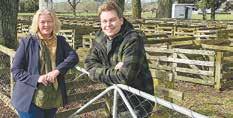
Penny concedes that many farmers are doing it tough and this season’s milk price is likely to be below their breakeven point. He says a “back of the envelope” calculation, with total operating expenses of $6.80/kgMS and debt servicing costs of $1.50/kg, would put
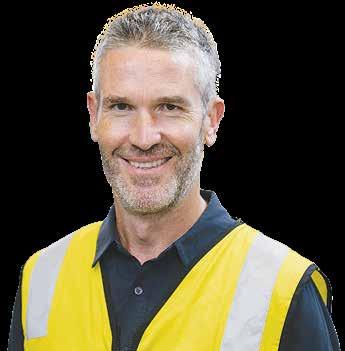
farmers’ total outgoings at $8.30/kgMS.
Last week, Westpac slashed its forecast milk price by $1.10 to $7.80/kgMS. Fonterra’s current forecast milk price range is $7.25 to $8.75/kgMS.
Penny points out that breakeven estimates vary widely by farm, with some farms having larger deficits while others may still even be in surplus.
“That said, farm balance sheets are generally strong. With that in mind,

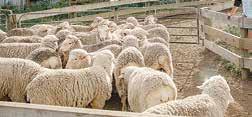
plus the experience gained during previous downturns, we expect that farmers are well placed to manage through this milk price cycle.”
Penny expects Fonterra to lower its forecast range in August.
ANZ recently dropped its forecast milk price by 50c to $7.75/kgMS. The bank’s agri economist Susan Kilsby believes that prices will not materially increase before a large proportion of
Tough times on farm A fond farewell!
the current season’s supply is traded.
“What is clear is that consumer demand is being impacted by weaker economic conditions in many regions,” she says.
“Most economies are still growing, albeit at a considerably slower pace than normal, which is taking a toll on dairy demand.”
Kilsby expects the Chinese market to remain relatively weak for some time yet. However she believes that as milk supplies tighten, prices should improve later in the season.
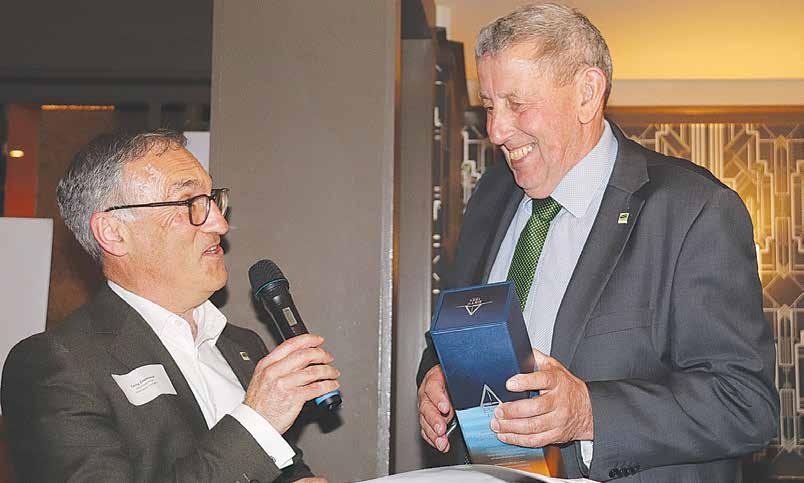
ASB is sticking to its forecast milk price of $7.25/kgMS and warns that a rapid recovery in Chinese demand looks unlikely, with the latest economic data continuing to underperform.
One of the biggest impacts on dairy farm profitability is rising interest rates. Farmers, re-fixing their mortgages, are facing huge rises in financing costs.
Federated Farmers dairy chair Richard McIntyre claims that some farmers are taking on additional work off farm to keep up with rising interest costs. He points out that while the price of some farm inputs such as nitrogen fertiliser, fuel, and palm kernel expeller (PKE) are starting to ease, there is still a lot of stress amongst farmers, particularly those with higher levels of debt.
“Many have come off fixed interest rates and the significantly higher interest payments are really starting to bite,” he told Rural News McIntyre warns that any drop in the milk price will exacerbate the
AUGUST 1, 2023: ISSUE 781 www.ruralnews.co.nz TO ALL FARMERS, FOR ALL FARMERS AGRIBUSINESS Farm software and recording companies joining forces. PAGE 17 ANIMAL HEALTH Mineral boosts a smart way to lift lamb production. NEWS *Offer valid from 01/08/23 to 31/08/23. Available while stocks last at participating Honda dealers only. For full terms and conditions and to see selected eligible models go to hondamotorbikes.co.nz. Offer only available on payment with Farmlands Card. Farmlands terms and conditions apply. KEEP MORE IN YOUR BACK POCKET WITH YOUR FARMLANDS CARD. For the month of August save $1000 on selected ATVs.* hondamotorbikes.co.nz Farmlands Solus 70 x 265 Aug 23.indd 1 26/07/23 11:40 AM
SUDESH KISSUN sudeshk@ruralnews.co.nz
problem.
A group of influential people from across the ag sector recently gathered in Wellington to farewell Gavin Forrest. A highly respected man who has spent more than 30 years as an advocate for the nation’s farmers. Forrest’s latest gig was as general policy manager for Federated Farmers. However, he also worked as a special advisor to several Ministers of Agriculture and as an advisor in MAF and MPI, as well as farming in his own right. Among those present at the function, appropriately held at a pub on the capital’s Featherston St, were former Ministers of Agriculture Sir David Carter and Nathan Guy, who Forrest worked with while at MPI. – See full story on page 5

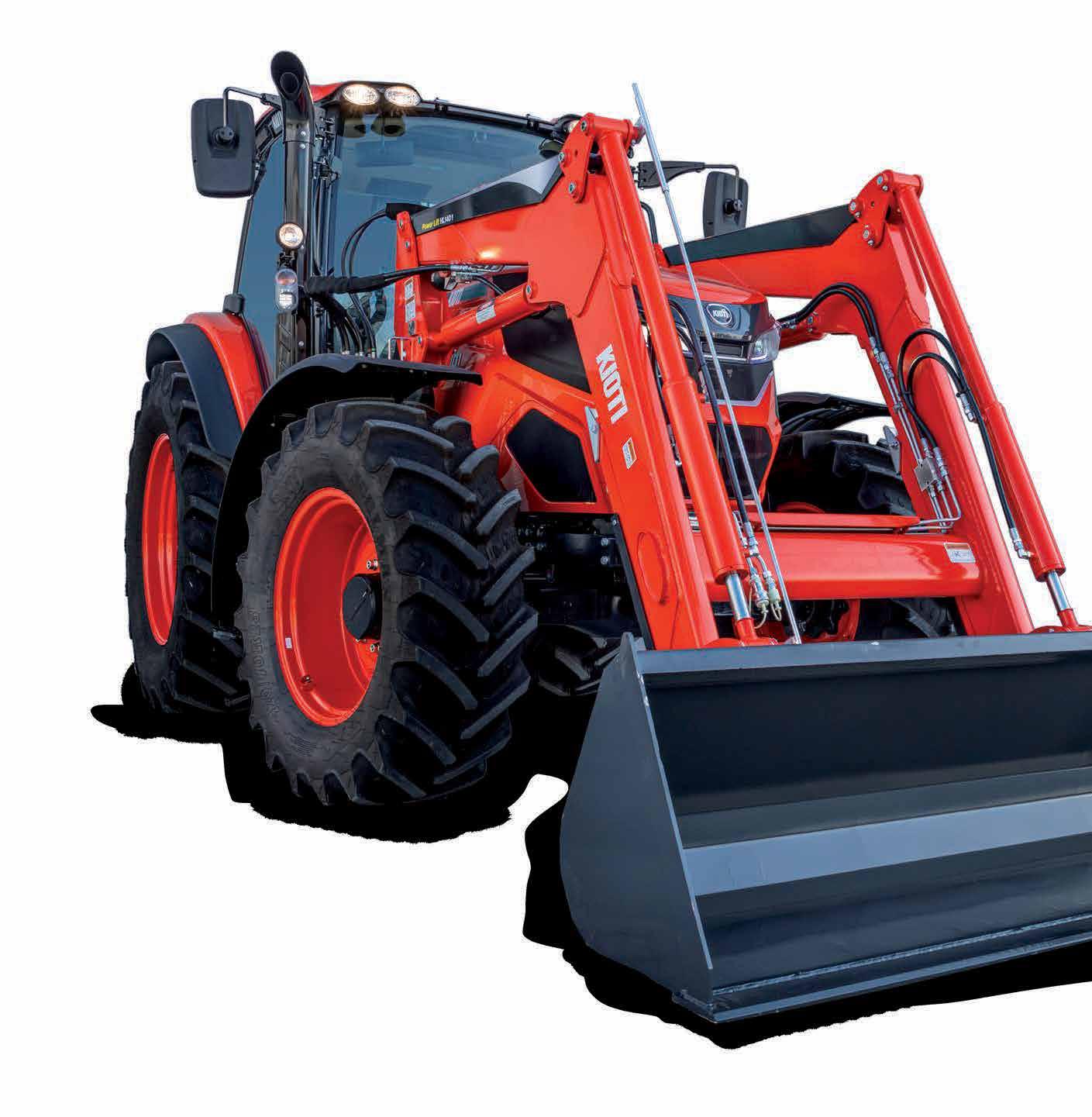
JUST A BLO0DY GOOD
0800 627 222 Kioti HX 130-140HP Tractor & loader from $119980 +GST
TRACTOR
ISSUE 781
Building relationships Ag envoy’s big focus
says while glyphosate use is important for arable farmers, it is very important right across the whole primary sector.
IT’S ALL about relationships.
That’s how NZ’s latest special agricultural trade envoy Hamish Marr describes his new role – following in the footsteps of Mel Poulton, and before her, Mike Peterson.
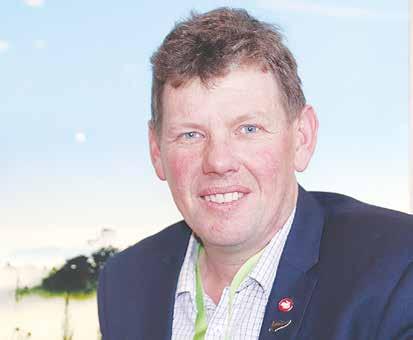
Marr is the fifth generation to work on the family farm at Methven. With his brother and father, they grow a multiplicity of seed crops and also have dairy, heifer and sheep grazing operations on the 500 hectare property.
After completing a bachelor of agricultural commerce at Lincoln University in 2000, he spent five years as a field officer for Ravensdown before doing his OE, which took him to the UK and the USA. In 2006, he returned to the family farm and now lives there with his wife Melanie and three daughters.
In 2019, Marr was awarded a Nuffield scholarship and the subject of his research was glyphosate use, how it
is regulated in NZ and what farmers here could learn from others if a ban or de-registration were to occur. He
Earnings boost for PGW
RURAL SERVICES company PGG Wrightson (PGW) has lifted its 2023 earnings guidance on the back of solid fourth quarter trading.

The company says it now expects earnings before interest, taxes, depreciation, and amortisation (EBITDA) to lift by $3 million to $60m, just shy of the record $67m achieved in 2022. This guidance remains subject to audit. PGW will release its annual results on August 15.
In February this year, PGW announced a half-year EBITDA of $47.8m, just shy of the record $48.2m achieved last year. The solid halfyear result included new revenue and earnings highs for its retail and
water group which generates most of its earnings in the first half of the financial year. However, this was partially offset by challenges in the real estate business.
PGW acting chair, U Kean Seng, says following strong half-year result, the company has continued to see pleasing operational performance over the final quarter of the financial year.
“Based upon this performance, the board has determined to lift its operating EBITDA guidance for the full year to June 30, 2023 – from $57 million to around $60 million.” Seng points out that the strong result has been achieved despite a
challenging year beset with weatherrelated events, particularly in the North Island.
“Our fourth quarter trading has exceeded expectations in most business units with retail, livestock, wool, and water all experiencing solid demand.
“The one exception was our real estate business which continues to operate in challenging market conditions.”
Seng, who took over as acting chair following a board upheaval around former chair Lee Joo Hai, says it’s pleasing to be able to report a strong finish to the financial year and lift guidance expectations.
“We have got Roundup – like it or not – and it’s integral to all the farming in NZ,” he says.
Marr has just taken up his new role and admits it’s too early for him to make any pronouncements on what he may do, beyond saying his role is to promote and protect the NZ brand, which he says is second to none in the world.
“For me, the job is 100% about relationships and getting to know my counterparts around the world,” Marr told Rural News
“To me, relationships are about viewing things through the eyes of the people you are talking with and somewhere amongst it all is the middle ground.
“That’s my challenge, but I will get there,” he says.
Hai, who is fighting charges filed under Singapore securities legislation, is leaving the rural service trader’s board.
He stepped down as chair in early July and won’t be seeking re-election at PGW’s annual shareholders meeting later this year.
A PGW filing with New Zealand Stock Exchange recently said Hai noted that he was resigning “in order to eliminate the ongoing distraction caused due to media and market attention regarding the securities regulation matters that he is defending in Singapore”. – Sudesh Kissun
@rural_news
facebook com/ruralnews
RURAL NEWS // AUGUST 1, 2023 NEWS 3 HEAD OFFICE Lower Ground Floor, 29 Northcroft Street, Takapuna, Auckland 0622 Phone: 09-307 0399 Fax: 09-307 0122 POSTAL ADDRESS PO Box 331100, Takapuna, Auckland 0740 Published by: Rural News Group Printed by: Inkwise NZ Ltd CONTACTS Editorial: editor@ruralnews.co.nz Advertising material: davef@ruralnews.co.nz Rural News online: www.ruralnews.co.nz Subscriptions: subsrndn@ruralnews.co.nz
www.ruralnews.co.nz NEWS 1-13 HOUND, EDNA 14 CONTACTS 14 OPINION 14-16 AGRIBUSINESS 17 MANAGEMENT 18 ANIMAL HEALTH 19 MACHINERY AND PRODUCTS 20-22 RURAL TRADER 22-23
PETER BURKE peterb@ruralnews.co.nz
*Offer valid from 01/08/23 to 31/08/23. Available while stocks last at participating Honda dealers only. For full terms and conditions and to see selected eligible models go to hondamotorbikes.co.nz. Offer only available on payment with Farmlands Card. Farmlands terms and conditions apply. KEEP MORE IN YOUR BACK POCKET WITH YOUR FARMLANDS CARD. For the month of August save up to $650 on selected 2 wheel farm bikes.* hondamotorbikes.co.nz Farmlands 100 x 265 Aug 23.indd 1 26/07/23 1:03 PM
NZ’s new special agriculture trade envoy Hamish Marr.
Low carbon fertiliser is now available in NZ
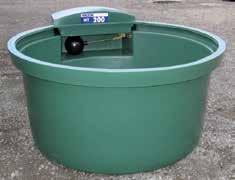
FERTILISER CO-OPERATIVE Ravensdown

recently received a delivery of low-carbon urea –a major step to lower its environmental footprint.
The 2700 tonnes of urea from Saudi Arabia, SABIC Agri-Nutrients Company (SABIC AN), is key to supporting Ravensdown’s commitment to reduce carbon emissions by 50% by 2030.
Ravensdown chief executive Garry Diack says the collaboration with SABIC AN is crucial. It’s also the first ever global shipment of lowcarbon urea for the Saudi Arabian company.
“As pressure mounts for New Zealand farmers to lower greenhouse gas emissions from behind the farm gate, we are
working on their behalf right through the value chain to support them,” says Diack.
“SABIC AN’s innovative manufacturing techniques for urea production have the potential to be game changing for the global fertiliser industry. We are excited to continue our valued collaboration with a company that has environmental goals and aspirations that are very aligned to our own.”
Leading independent testing, inspection, and certification agency TÜV Rheinland has confirmed that the urea manufacturing process produces 64% less carbon dioxide per tonne of urea than standard processing.
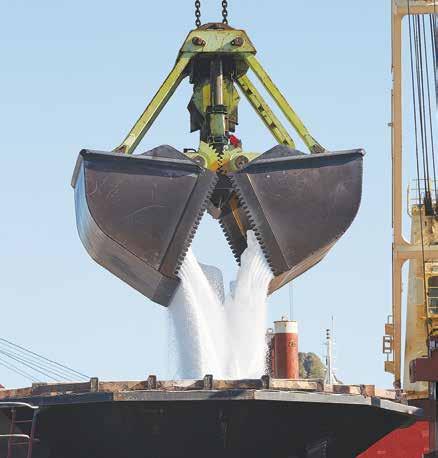
While it’s manufactured using less carbon, the properties of the urea remain the same. This means emissions generated using the urea on
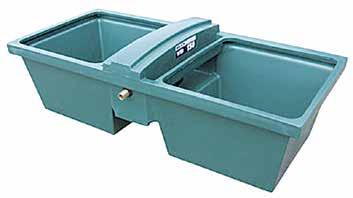
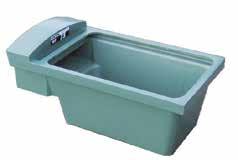
pasture or crops does not change and the low
carbon advantage is captured as a scope 3 (indi-
rect) emission only.
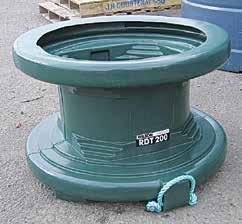
“We continue to develop our 25-year relationship with SABIC AN, working together on future innovations to reduce the carbon footprint of the whole supply chain,” says Diack.
SABIC AN says the innovative manufacturing solution for low carbon urea was recently recognised by the prestigious Edison Awards1 as a Gold Award winner under the Food and Agriculture Advancements “Soil & Crop” category.
Saudi Arabia is already a pioneer in the production and export of clean hydrogen and derivatives such as ammonia. It has partnered with New Zealand on this innovative venture as part of its ambitious strategy to be the world’s leading clean hydrogen hub, the com-
Ballance appoints its new boss
FORMER FONTERRA executive
Kelvin Wickham takes over as Ballance Agri-Nutrients chief executive in September.

A 34-year veteran with Fonterra, Wickham retired last year from the co-op as head of business activities across Africa, Middle East, Europe, North Asia and the Americas. He also had global oversight of Fonterra’s Active Living Functional Nutritional Unit and the NZMP brand.
Prior to that, he was responsible for the business unit NZMP, the biggest dairy ingredients selling and
marketing entity in the world. Wickham has lived in Shanghai where he led Fonterra’s Greater China business with responsibility right across the business – from farms to brands.
In an earlier supplier and external relations role, Wickham worked closely with farmer shareholders and was responsible for Fonterra’s farmer facing teams – as well as engaging with key New Zea-
land government and external stakeholders.
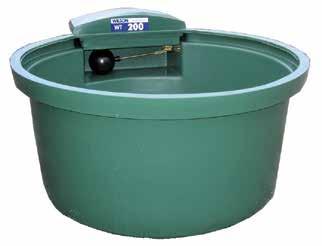
Wickham says he’s grateful for the opportunity to lead Ballance which he says plays an important role in New Zealand’s economic engine.
“It is important to me that we harness the opportunities of global customers and consumers for our
communities at home in a way that ensures we have a sustainable, prosperous food and fibre value chain throughout the world,” he says.
Ballance chair Duncan Coull says Wickham’s appointment reflects the co-op’s ongoing commitment for Ballance to be ‘fit for purpose in a fastevolving world’.
“Kelvin’s wide-reaching experience in the marketplace, his passion for innovation, strong focus on people and driving performance will ensure the co-operative is well placed to serve the needs of our customers
pany says.
The kingdom is seeking to forge partnerships with entities from all over the world to help them meet their clean energy targets.
SABIC AN chief executive Abdulrahman Shamsaddin says sustainability is integrated into its strategy, enabling them to deliver responsible business and generate sustainable growth.
“We are constantly developing solutions empowering our customers to achieve their own sustainability ambitions.
“Our collaboration with Ravensdown is a major step in this direction and a strong indicator of SABIC’s overall commitment to delivering low-carbon solutions to customers and helping them achieve their netzero targets.”
and shareholders into the future,” says Coull.
Wickham will replace Mark Wynne, who steps down at this year’s annual general meeting after nine years in the role.
“I want to take this opportunity to thank Mark Wynne once again for his leadership of Ballance,” Coull says.
“His efforts and dedication have resulted in long-term achievements that have significantly and positively impacted the growth and sustainability of the business and the food and fibre sector.”
RURAL NEWS // AUGUST 1, 2023 4 NEWS
Ballance’s new chief executive Kelvin Wickham
PHONE 06 357 8562 WILSON www.wilsonplastics.co.nz AVAILABLE AT YOUR LOCAL FARM OR IRRIGATION STOCKIST PORTABLE TROUGHS... WT 75 WT 200 BREAK-FEEDING... 200 litres specially designed for break-feeding. They can be towed when full and also can reel in metres of alkathene. RDT 200 PHONE 06 357 8562 WTD 150 • Ideal between paddocks • Ballfloat fitted WT 75 • Easy to handle • Ballfloat fitted WT 200 • Tough and durable • Ballfloat fitted PORTABLE TROUGHS AVAILABLE AT YOUR LOCAL FARM OR IRRIGATION STOCKIST
SUDESH KISSUN sudeshk@ruralnews.co.nz
Farming advocate calls time

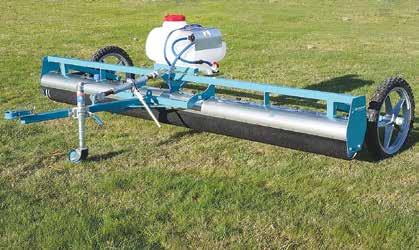
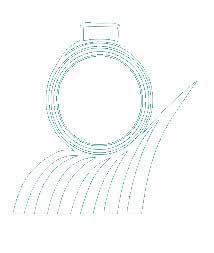
THE GOOD AND GREAT PAY TRIBUTE
AFTER 30 years of being a highly effective, behindthe-scenes advocate for the ag sector, Gavin Forrest has hung up his boots
Raised on a sheep and beef farm near Hunterville in the lower North Island, Forrest completed a BAgSci at Massey then returned to work on the family farm.
In the late 1980s, he got involved in farmer politics and eventually rose to becoming vice president of the newly formed Manawatu/Rangitikei branch of Federated Farmers.
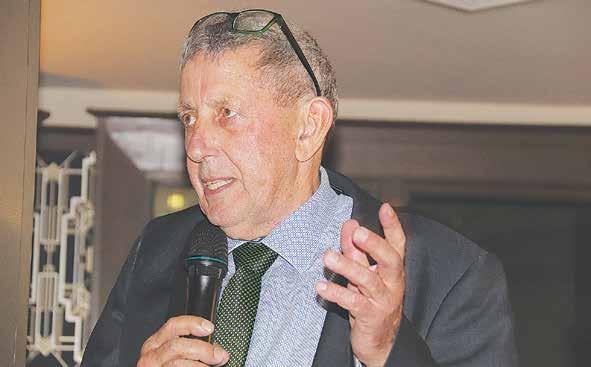
But then he jumped ship, as it were, and joined Feds as a regional policy advisor and later moving to Wellington and then Christchurch to head up the organisation’s group.
A change of chief executives saw Forrest quit Feds and join the then MAF as a Rural Affairs Co-ordinator. In 2009, he was appointed as the agricultural private secretary to the then Minister of Agriculture, David Carter, and later Nathan Guy – a job he says he greatly enjoyed. This role lasted for four years after which he went back to MPI before finally returning to Feds as general manager policy.
During his time in the sector, Forrest has seen
and been a part of many changes – as well as playing an integral part in changing government policy. One of the highlights he told Rural News about was getting ACC to lower its premiums to farmers. Another was sorting out the complex issue of farm vehicles on roads.
His mantra as an advocate was based on the advice of his father who told him, when negotiating, always leave something on the table and don’t go in hard at the start.
“The aim being to get a fair and equitable outcome,” he explains. “Also, never personalise anything because people may actually agree with you but can’t say so.”
Forrest says many offi-
cials are not aware of the intricacies of farming and he believes it is the role of the sector to educate these people, because often their ignorance is quite innocent.
Another point he makes is the importance of the role of agricultural private secretary to the Minister of Agriculture.
He says this role is undervalued because the right person with experience and knowledge can pre-empt problems or misunderstanding at a political level and pave the way for quality outcomes.
“I think the role is critical, in the sense that you get to know the minister better than the CEO of the department, because you are working alongside them on a daily
basis,” he explains. “You are picking up the nonverbal stuff and can tell if a minister needs more information or clarification.”
Forrest has seen many changes over the years and the fortunes of Feds wax and wane. He says the voice of organisations such as Feds, and other major lobby groups, are not being heard like they used to be. He says the changing nature of the media is probably a factor in this.
“I think some government agencies have forgotten that lobby groups provide free advisory and consultancy services, which they could use,” he told Rural News. “But I think there is some suspicion around advocacy groups, which is a pity.”
CRACKDOWN ON WILD GOATS
WILD GOATS, a growing problem for many farmers and landowners, are in the firing line.
The Department of Conservation (DoC) is increasing wild goat control on public conservation land and has partnered with the New Zealand Deerstalkers Association (NZDA) to run a national wild goat hunting competition. The competition is also supported by Federated Farmers and retailer Hunting & Fishing Ltd.
Wild goats are known to cause severe damage to New Zealand’s native plants and habitats. They are also a problem for many private landowners, damaging and destroying fences, pasture, new trees, and riparian plantings. Wild goats are becoming increasingly widespread, with significant numbers in some places.
DoC national biodiversity monitoring shows that the faecal pellet index of deer and goats, a measure used to estimate numbers of animals, at monitored sites across public conservation land rose by 48% between 2013 and 2020,
Ben Reddiex, director national programmes at DoC says the competition provides an excellent opportunity to bring together hunters, farmers, and conservationists to work towards a common goal.
NZDA national vice president Callum Sheridan agrees.
“Hunters spend a lot of time in New Zealand’s remote areas and think looking after the backcountry is important.”
The competition will have a national spot prize pool with over $30k worth of prizes up for grabs, and local prizes with a range of cat-

egories. Prizes have been kindly donated by the hunting and outdoor recreation sector.
Competitors will be able to hunt anywhere they have permission through landowner consent or the local authority by permit for public conservation land, forestry, farms, or regional council land.
Competitors need to enter at a NZDA branch open day or at an official recording point. The competition promotes safe, ethical, and humane hunting. Participants are also urged to follow the seven rules of firearms safety and the Animal Welfare Act 1999.
For information on how to enter, the rules, conditions of entry visit: www.doc.govt.nz/wild-goathunting-competition
MORE THAN 100 people, from right around the country, came to pay tribute to Gavin Forrest on his retirement from the ag sector.
Guests included two former Ministers of Agriculture, Sir David Carter and Nathan Guy, the present Associate Minister of Agriculture Jo Luxton, former Feds presidents William Rolleston and Katie Milne. Also attending were Sam McIvor, B+LNZ’s chief executive, and Kimberly Crewther, executive director of DCANZ. They all gathered to celebrate a man whose advocacy has helped make the primary sector more effective and efficient.
Now that he’s retired, Forrest has gone on holiday and has plans to build a new house with his partner. However, there is no mention of work – at least for the meantime.
Guests were invited to give their own tributes to Forrest and the common theme was his outstanding knowledge and the way he handled himself during complex and difficult negotiations. McIvor praised his role in developing closer relations between B+LNZ and Federated Farmers. He also described Forrest as being fearless and said what needed to be said at difficult times.
Feds chief executive Terry Copeland also paid tribute to Forrest saying the organisation will miss him. Rolleston joked that Forrest never opened or read any of his emails, but said he was master of good policy and good robust debate.
RURAL NEWS // AUGUST 1, 2023 NEWS 5
peterb@ruralnews.co.nz
PETER BURKE
After 30 years advocating for the NZ agriculture sector Gavin Forrest has hung up his boots.
@rural_news facebook
ROTOWIPER... IT JUST GOT BETTER! 48 Bremners Road PO Box 333 Ashburton • W: www.rotowiper.com P: 03-308 4497 • M: 027-311 9471 • E: rotowipersales1@gmail.com Trailing model towed by a 4 wheel bike FANTASTIC NEW FEATURES! • Single height adjustment • Roller drive disengagement • Fold-up drawbar • Tank leveller adjustment • New strong design frame • New stub axle hub arrangement • All covers now stainless steel TR Rotowiper New electric height adjustment
com/ruralnews
Long, slow and painful recovery for cyclone affected growers

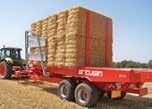
HORTICULTURENZ
CHAIR Barry O’Neil says while they welcome the money and support the Government is offering to growers affected by Cyclone Gabrielle and other adverse events, they are delving into the details of the offers.
He says they want to fully understand what’s in it for growers and get feedback from them as to whether or not it will meet their specific needs.

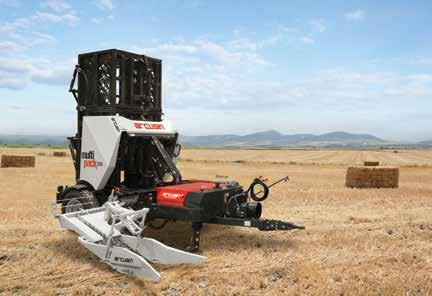
O’Neil says they need to get a clear picture of what the banks are offering and how this will benefit growers and also to identify any gaps or points that need
clarification. He told Rural News they may go back to the
Government to find a solution, but he is well aware of the Government’s position that it will not be offering any more grants.
There are two elements to the Government proposal. The first is aimed at encouraging banks to more actively help farmers and growers to get their businesses back on track, with the Government offering to take 80% of the risk of a loan to a grower away from the banks.
The hope here is that banks will reduce interest rates and offer more flexible terms.
The second part of the package is where the Government will lend up
to $4 million to a grower or farmer, if they cannot get a loan from a bank. However, to qualify for this, the individual must be able to prove that they can get their business back on track and that they can then get a bank loan. In essence, both schemes are contingent upon the fact that a grower can get their business back on track eventually.


“Certainly, if you haven’t got an orchard or no soil left and it’s stripped down to rock, then this is not going to help because there won’t be any revenue generated from that area going forward,” O’Neil says.
He adds that the Gov-
ernment has already given $250,000 to each eligible orchard and a number of support mechanisms have been provided. He adds that, while the recovery process is continuing, the ongoing wet and unsettled weather has made this very challenging for some – especially, but not exclusively, those in the Hawke’s Bay region.
“I have visited some orchardists who don’t have an orchard any more, they just have a river,” O’Neil told Rural News
“So, some growers will struggle and understandably it’s very unsettling and emotional for everyone involved – seeing
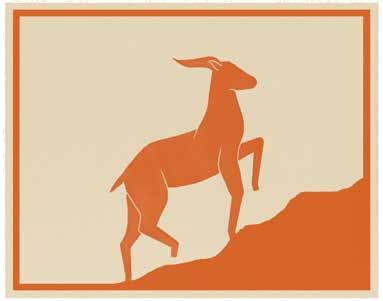
your life’s work being washed away overnight.”
O’Neil says HortNZ is doing everything it can do to help and support affected growers through this.
He says the wellbeing of growers is the number one priority and a lot of effort is going into supporting growers from a number of organisations – such as the Hawke’s Bay Fruitgrowers Association, the Horticulture Charitable Trust and the Rural Support Network.
“A lot of activities are underway and more will be needed and will continue to be needed to support the wellbeing of growers and farmers throughout the recovery.”
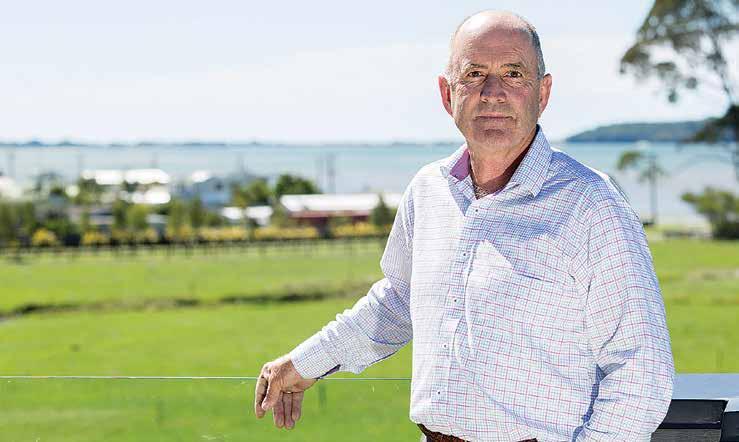
RURAL NEWS // AUGUST 1, 2023 6 NEWS
PETER BURKE peterb@ruralnews.co.nz
“Certainly, if you haven’t got an orchard or no soil left and it’s stripped down to rock, then this is not going to help because there won’t be any revenue generated from that area going forward.”
RIGHT SIDE PICK UP! D14 Multipack Bale Packer. For fast and cost-effective conventional bale stacking & handling conventional bales. www.arcusin.co.nz Call Greig Singer | 027 266 7897 www.gaz.co.nz | CAMBRIDGE | ŌTOROHANGA | ROTORUA | TAUPŌ Brought to you by You can take part anywhere you have permission to hunt. The competition promotes safe firearms use, keeping safe in the backcountry, and ethical and humane hunting. To enter, visit www.doc.govt.nz/ wild-goat-hunting-competition Supported by the Federated Farmers of New Zealand and Hunting & Fishing New Zealand. ENTER
NATIONAL WILD GOAT HUNTING COMPETITION 1 August – 26 November 2023 Compete for national and regional prizes while helping to protect the environment. R248621
HortNZ chair Barry O’Neil says his organisation is doing everything
it can do to help and support affected growers.
THE
Dr Smith goes to Palmerston
SIR LOCKWOOD Smith, who has had a long career in politics, diplomacy, agricultural science and farming, is the new chair of the Riddet Institute.
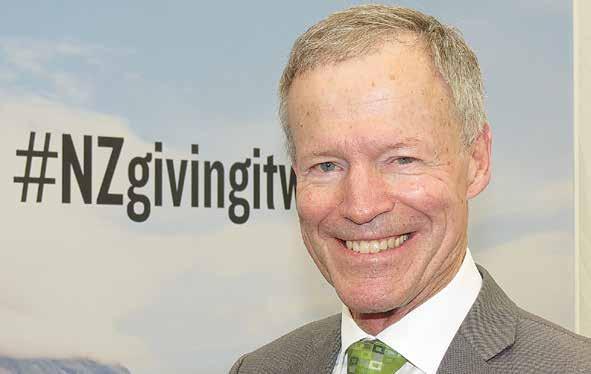
The institute is a CoRE – or Centre for Research Excellence – and is based at the Massey University campus at Palmerston North. It is the country’s premier national centre for fundamental and strategic scientific research in food science and novel food processing. It employs leading scientists from a number of research institutes within NZ and overseas.
Smith replaces former board chair Stuart McCutcheon, who passed away suddenly at the beginning of 2023.
Smith has a PhD in Animal Science from the University of Adelaide having earlier completed his BAgrSc and MAgrSc (Hons) at Massey University. Prior to entering politics in 1984, he lectured at Massey University where he was deeply involved in the development of maize silage. He also worked as the marketing manager for the NZ Dairy Board.
In his long political career, Smith served in a number of ministerial roles including Education, Agriculture, Tourism and Trade portfolios and Associate Minister roles in Finance and Immigration. In 2008 he became speaker of the House of Representatives, a post he held until 2013. He was then appointed NZ High Commissioner to the UK and Ambassador to Ire-
land until 2017.
Smith has always retained a strong interest in the farming sector and to this day is a renowned breeder of Belgium Blue cattle at his Woodle-
igh farm at Matakohe in Northland.
He says the new board role reflects his interest in science and his particular enthusiasm for the work of the Riddet
Institute in food science.
Smith says science is particularly important as our food industry is grounded in evidence-based nutritional research.
“What worries me
today is that science is now being downplayed more and more,” he told Rural News
“People desperately need high standards in food research, to ensure
the science of food advances in the best way for the best outcomes for future populations. This is where the Riddet Institute work is so valuable.”
Smith says the institute has an international reputation and a high profile that is well deserved, and he is looking forward to supporting its work through his role as chair.
Since he finished as the High Commissioner to the UK, Smith has continued as a member of the United Kingdom Trade & Agriculture Commission. This has seen him work in international trade advisory roles in animal health and environmental regulatory work.
He takes up his new role later this month.
100% MADE IN NEW ZEALAND
RURAL NEWS // AUGUST 1, 2023 NEWS 7
facebook com/ruralnews
PETER BURKE peterb@ruralnews.co.nz
@rural_news
Lockwood Smith is the new board chair of the Riddet Institute.
We’re here for the good of the country. As a 100% NZ-owned
we’re not here for
accounts of overseas
We’re here
the New Zealand
and
Ask around about us, or give us call on 0800 366 466.
mutual,
the bank
owners.
for
farmers
growers who are our members.
Local carpet maker’s Napier plant still remains offline
WOOL CARPET maker Bremworth’s Napier plant remains offline following Cyclone Gabrielle in February, with the future of 136 workers still up in the air.
To provide clarity to staff, the company is now offering staff options that include voluntary redundancy or redeployment to the Whanganui plant.
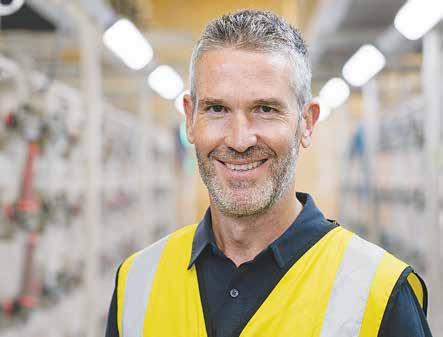
Bremworth chief executive Greg Smith says since the weather event in February, the priority has been its people.
“While we do not yet have a definitive view around the future of the plant, we are doing all we


can to support them and working through the process in good faith,” says Smith.
The Napier plant and buildings suffered extensive damage. A detailed assessment of the damage, involving external engineering specialists over the last few months. This has now been completed and the results are being reviewed by the loss adjustors and Bremworth. The insurance claims process is expected to take several months to complete.
Smith says Bremworth has been conscious of the impact on staff during this time. While employees have been paid since the plant went
offline in February, he says the company realises that staff are looking for more clarity around
their future at the Napier plant. In response to staff feedback, Bremworth is presenting several
options to team members that may assist with their personal circumstances and wellbeing. Career and
financial advice, as well as emotional support, is available to all employees.
Bremworth Napier is a key plant, supplying yarn to the carpet operation and dyed fibre to the Whanganui yarn plant.
Following Cyclone Gabrielle’s impact on the Napier plant, Bremworth made alternative supply arrangements – including supply of yarns from an independent New Zealand yarn spinner, the use of independent thirdparty dyeing facilities to supply the Whanganui yarn spinning plant, the supply of NZ wool yarns from overseas suppliers.
Smith says business continuity plans have been in place and pro-
gressing well. Insurance payments to date have also ensured Bremworth support affected staff and meet its ongoing obligations. Further insurance payments are expected upon completion of the assessment of damage to buildings, plant and equipment, and the loss of inventory and profit.

Smith confirms that alternative supply arrangements for dyed fibre and yarns are proving successful, “putting the company into an encouraging position to continue to supply key product ranges to its distribution partners”.
Bremworth also operates a plant in Auckland.
RURAL NEWS // AUGUST 1, 2023 8 NEWS
SUDESH KISSUN sudeshk@ruralnews.co.nz
(09) 294 8585 | 267 Great South Road, Drury, Auckland 0800 440 290 | www.polarisnewzealand.com | /PolarisNZ | /polarisorv_ 6.99% FINANCE ON ALL SXS MODELS 1/3 UPFRONT IN 12 MONTHS 1/3 1/3 Finance and accessories offer is available on a selection of in-stock models only, check with your participating Polaris Dealer for more details. Not valid with any other promotion. Excludes Fleet Clients. Finance is provided by Polaris Finance, a program operated by De Lage Landen Limited Company No 1355515 and available for business purposes only on a Hire Purchase Agreement. Credit approval, fees, terms and conditions apply. Finance rate is 6.99% and is based on a 24 month term, for full promotion details and structure please contact your Polaris Sales Representative. Delivery & Finance Settlement must be prior to 30/09/2023. *Terms and conditions apply. IN 24 MONTHS
Bremworth chief executive Greg Smith says the company is now offering staff options that include voluntary redundancy or redeployment.
Consumer demands will determine future

CONSUMERS IN the future may want produce that they perceive is designed especially for them.
That’s the message from Ministry for Primary Industries (MPI) director general Ray Smith who says by 2050 consumers will have more diverse preferences than they do now and NZ has to keep pace with such trends. He believes that while consumers are interested in where their produce comes from, they are
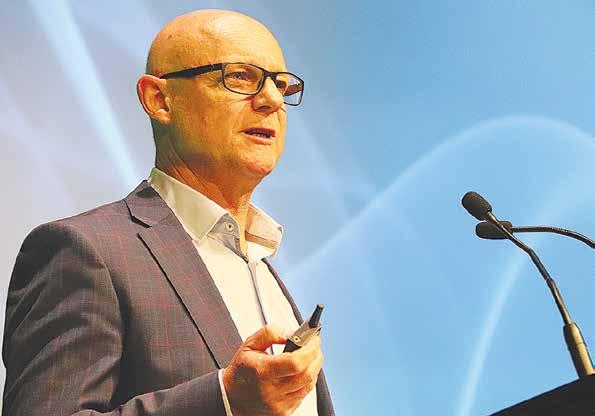
directly to them, is back to nature and those who want a ‘food experience’. He says there is also an interest in organically produced food products.
The report says that while NZ has a reputation as a safe and trusted provider of food products, by 2050 that may not be enough on its own. It adds that by then animal and people welfare issues may well be core needs – along with food sovereignty.
In terms of future markets, the report says the balance between NZ’s traditional markets and
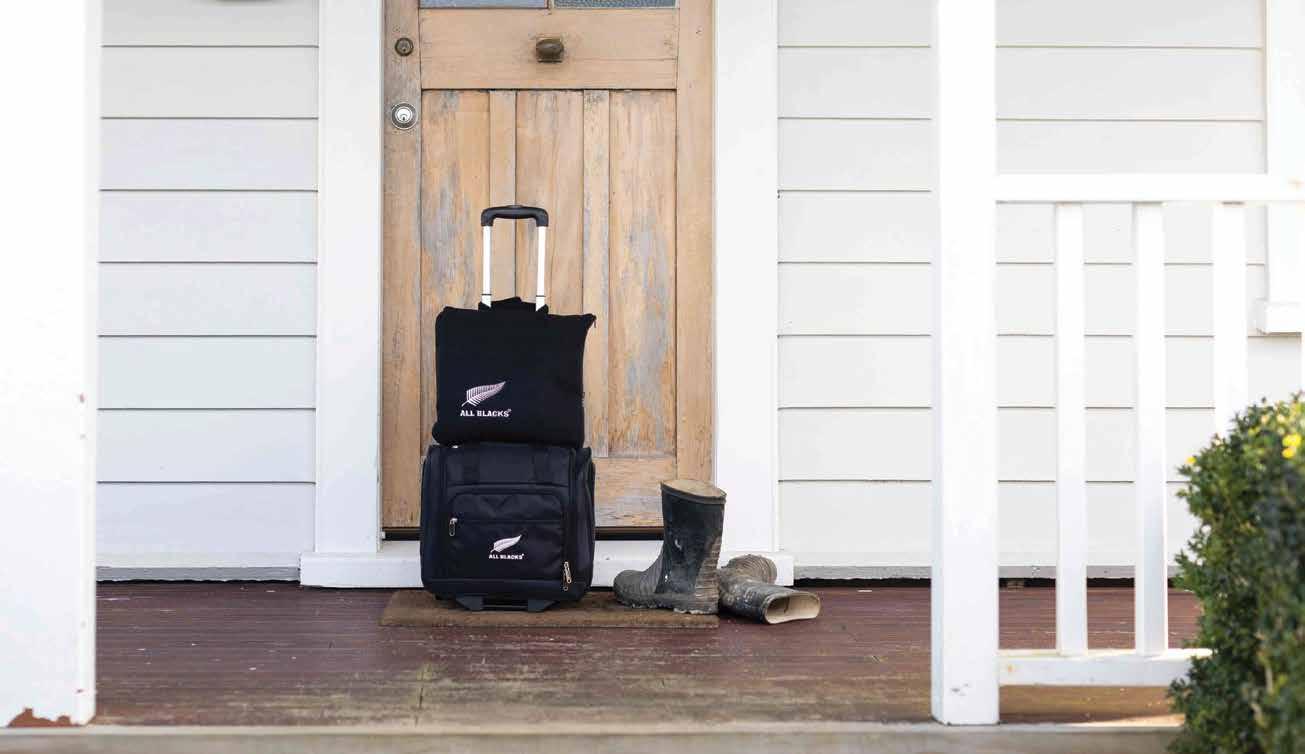
are looking for products that are close to them and are seeing those that are imported are more likely to be processed food.
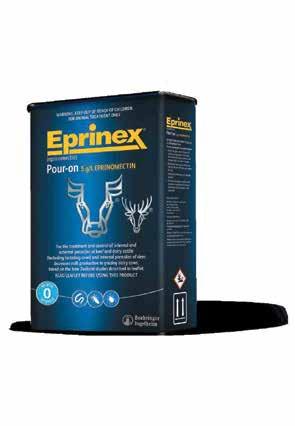
He adds that the challenge for NZ is to reduce our emissions profile all the way from the farm through to market. He says part of this will involve shipping companies coming to terms about how they deal with emissions.
Smith says a focus on science to reduce emissions is paramount and, as part of this, NZ will be collaborating with coun-
RURAL NEWS // AUGUST 1, 2023 NEWS 9
LE T’ S GO! ® ® Never mis s a match wit h thi s ultimate ALL BLACKS travel b a g a nd cus hi on set your s wit h selected EPRI NEX thi s season! *Promo ends 30th September 2023. Ask in clinic for qualifying products. PROUDLY AVAILABLE FROM YOUR LOCAL PARTICIPATING VETERINARY CLINIC See product label for full claim details and directions for use. Boehringer Ingelheim Animal Health New Zealand Limited. Level 3, 2 Osterley Way, Manukau, Auckland, New Zealand. EPRINEX® is a registered trademark of Boehringer Ingelheim Vetmedica GmbH, used under licence. Registered pursuant to the ACVM Act 1997, No. A007191. © Copyright 2023 Boehringer Ingelheim Animal Health NZ Ltd. All rights reserved. ALL BLACKS® is a registered trademark of New Zealand Rugby Union Incorporated NZ. NZ-CAT-0023-2023. futureproducers.co.nz Ensure young stock become future high producers through improved health, growth and energy at: Scan here to calculate the R.O.I. on your herd...
PETER BURKE peterb@ruralnews.co.nz
The future of farming is digital and it’s coming fast
INITIATIVES ALREADY UNDERWAY
THE FUTURE of farming is digital.
This is what Silver Fern Farms’ chief supply chain officer Dan Boulton told the 700 delegates at the co-operative’s recent “Plate to Pasture” Farmer Conference in Christchurch. Boulton outlined several ways SFF would embark on “a clear digital strategy” over the next few years. He explained that it had to do so to remain relevant and connected with tomorrow’s consumers.
“We’re seeing increasing investment in digital and data from governments and big industry players right across the globe,” Boulton said.
He adds that progressive companies that recognised the value of data were investing millions.
“For context, I was recently with an
BOULTON ALSO ran over a number of initiatives SFF is working on with external partners, some of which were featured in other presentations at the conference.
One was Lynker, which maps and measures carbon sequestration on farm.
Boulton claims it will provide integrity to farmers’ carbon-zero claims and verify their nature-positive goals.
Another was CropX, which monitors and measures soil health with ground sensors, already installed on about 20 SFF farms.
“CropX has over 15,000 sensors in the ground worldwide. It’s a lot of data points that we can lean on,” Boulton added.
unnamed global supply chain player, and they shared that their annual spend on technology this year was $1.2 billion.”
He warned it was a wake-up for everyone.
“If you haven’t thought already about how you’re managing your own farm
DIGITAL WALLET
AN INITIATIVE that aims to overhaul the way farmers manage all of their data, while placing control firmly in their own hands by way of a “digital wallet”, has reached the stage of seeking farmer partners to begin testing and shaping its capabilities.
Trust Alliance New Zealand
(TANZ) chair Chris Claridge says it is now seeking expressions of interest from farmers willing to help assess and develop the system. Those interested can register on the Trust’s website.
Another example he gave was SFF’s partnership with Market2x (M2X) whose transport management system has provided massive efficiency gains, It has allowed for movement of the same number of animals with 16% fewer km travelled by trucks, fewer trucks on the road, an average 12% lower emissions per stock unit, and an animal welfare benefit from 16% less time spent on trucks by the animals.
Boulton said it had reduced empty truck movements by more than 580,000 km in the first half of this year alone, he said. “And we’ve been able to pay our carriers on average – this the national average – 23% more.”
data, I really encourage you to start thinking about it.”
Boulton says SFF and its farmers would need to provide data to prove their sustainability and nature-positive attributes, to provide confidence to auditors, verifiers, retail
“The system has reached the stage of a model ready to present to farmers, explain how it works and get their feedback on how well it solves some of their problems.”
He told Rural News the Trust wanted to hear the needs of different farming systems and was also keen to hear from groups of farmers in different catchments and regions.
Claridge said farmers are buried in red tape with constant demands for data on farm, from the private sector and public sector.
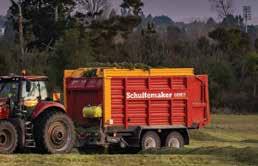
chop Market leading
buyers, consumersand even to meet future market access requirements.
“We know that we need to be able to be transparent around our impact on the environment and with our verified proof points around
Bankers, buyers and regulators all want the same information. That information may be scattered across several databases, but Claridge claims the digital wallet will allow farmers to simplify access to it while maintaining their control over it.
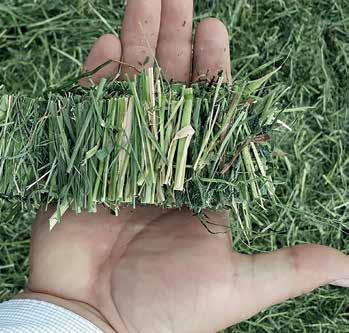
He says digital wallet methodology has already been adopted overseas and it was strange that it had not been in New Zealand.
It will also test some of the assumptions TANZ has made about what farmers want, Claridge adds.
action. We do face a systemic risk to our reputation, our brand and even access to financial capitals.”
Boulton told the audience that experts are saying that digital transformation is going to be the biggest change in supply chains since the industrial revolution. Historically, supply chains were seen as linear where product moves physically from one stage to the next.
“Today, supply chains are often described as being decentralized where the value sits in the data, and data can flow between any participant in the supply chain.”
Outlining some of the ways SFF and its partners were moving into the digital space, Boulton said Silver Fern Farms would need to retire many old systems and invest in new.
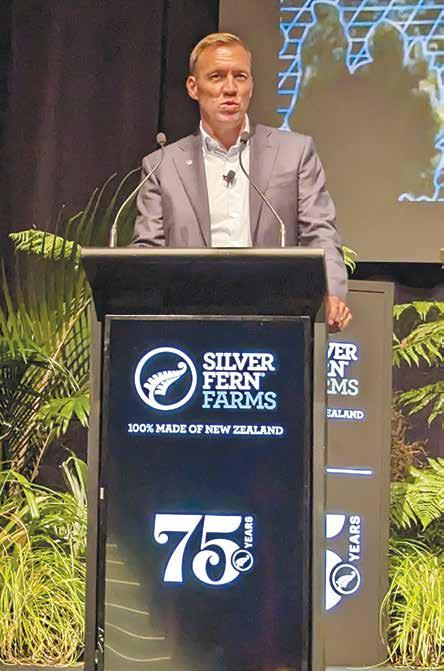
It was complex pro-
cess for a business moving 140,000 livestock bookings a year, totalling five million animals across seven different stock classes and six livestock programmes with special attributes, through 14 unique processing sites with different capabilities.
Boulton showed delegates a mock-up of a new interactive booking system, which would go out to farmers in 12 to 18 months, allowing them to self-manage their livestock forecasts and match with the plants’ kill schedules.
“The plan is to integrate this directly into your farm management system or data sharing platform, allowing data to be pushed and pulled through a decentralized data platform,” he says.
“This is going to be a pretty exciting when we get to a point as you get closer to the kill window,
you’ll be able to update and you’ll be prompted to update your weights and your timings to confirm your forecast.”
Also, due to launch very soon is an electronic Animal Status Declaration form (ASD) – soon to become a compulsory part of traceability.
Boulton says SFF’s store stock service had grown considerably over the last three years and SFF was committed to growing it further to all parts of the country.
“We want to digitize the workflow that currently exists and we’re looking at having that in place by the end of 2023.”
The company was also working on a new directto-consumer E-commerce solution that would see SFF being seen not just as an ingredients option but provide an immersive and interactive creative experience to “savour”.
RURAL NEWS // AUGUST 1, 2023 10 NEWS
NIGEL MALTHUS
Cochranes 03 3243 791 www.cochranes.co.nz Giltrap AgriZone Product Specialist 027 203 5022 www.gaz.co.nz
quality SECURE YOUR MACHINE NOW
Silver Fern Farms Chief Supply Chain Officer Dan Boulton speaks at the company’s 75th anniversary Farmer Conference in Christchurch. NIGEL MALTHUS.
The
perfect partner for NZ farming & contracting requirements Guaranteed chopping length from the hydraulically pressurised knife bank, shaped pick-up tines, unique trailing pick-up, compact design and steering make these market favourites.
Incremental change
IN THE next few years, the global consumer food industry will see a shift in innovation strategies as large food companies refocus their attentions on incremental changes as opposed to disruptive innovations.
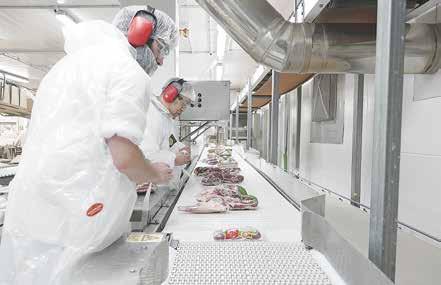
That’s according to a report by Rabobank, which says that the consumer food industry has witnessed an explosion of disruptive innovation for food products over the past decade. This includes things such as plantbased meats, synthetic fat replacements and precision fermented milk proteins.
But the report claims that this disruption has already reached its peak. It says that between 2010 and 2022, global consumer food saw a 288% increase in investments of food innovation. This is partly attributed to the adventurous and experimental palates of millennials and Gen Z.
Rabobank senior consumer food analyst Thomas Bailey says that weaker demand for disruptive innovations, economic uncertainty, and the higher interest rate environment have exacted their toll on many disruptive products coming to market.

“The same group of investors that drove the 288% increase in deals appears to have put the brakes on deals so far in 2023.”

He believes in future, disruptive innovations will likely face more rigor-






ous evaluation, resulting in fewer but potentially more successful disruptive products that have endured more intensive vetting.
Bailey adds that incremental innovation – creating new value through minor product or service adjustments such as packaging changes or new flavours – is considered safer. The report says consumer food companies will likely focus more on prioritising improving taste, convenience and health – rather than making more demanding and risky investments in unproven products.
“The main benefit of incremental innovation is that it offers more immediate benefits: supply chain simplicity, sustainability, cost reduction, and generally keeping customers happy and interested. Furthermore, it is better suited to keeping prices low for consumers in an inflationary environment like the one we have today.”
The report points to some big names in the food space, which have recently announced moves to incremental innovation: The likes of McDonalds announcing it will be revamping older products with a twist, such as the limited Chicken Big Mac, and optimising existing traditional products for taste.
It adds that those who continue to invest in disruptive innovations will need to exercise even more prudence when it comes to food products.
“They will need to
WHAT IS DISRUPTIVE INNOVATION?
DISRUPTIVE INNOVATION, first described in a Harvard business journal in 1995, posits that smaller companies with fewer resources target segments of the economy overlooked by larger incumbents.
By successfully targeting overlooked markets with little competition from the larger incumbents, the smaller company grows, gaining mainstream market share while retaining their original bases. This makes the niche product mainstream, cutting into the incumbents share or even replacing them and “disrupting” the economic status quo.
Just because a small business shakes up the status quo does not necessarily make it disruptive; it has to either target an overlooked demographic or create new consumer demographics.
Additionally, many disruptive products start off not immediately meeting mainstream standards, such as early telephones being very expensive to own and only capable of short distance calls.

take more steps to ensure product alignment with consumers in terms of taste, health, and convenience,” Bailey explains. “Investors who continue to seek out disruptive innovations will be a good source of insight for large food companies that are currently shifting to incremental inno-
vation but need to keep an eye on the longer-term horizon.”
The reports says investors in disruptive innovations will need more prudence when it comes to food products.
RURAL NEWS // AUGUST 1, 2023 NEWS 11
LEO ARGENT
www.cfmoto.co.nz Limited Edition Camo 800cc V-twin, 62hp Power steer Front bar & bonnet rack Headlight guards 3500lb winch Available in Camo 963cc V-twin, 71hp Two drive modes Power steer Hill descent control 800kg tow capacity 350kg rear tray capacity Available in Twilight Blue UFORCE RANGE CFORCE RANGE $19,490 EX GST $14,490 EX GST $15,490 NOW SAVE $1000 *CFMOTO Mid Year Sale is valid from 01/06/2023 to 31/08/2023 or while stocks last. Ride away prices quoted exclude GST. Visit www.cfmoto.co.nz for more information. 400cc engine, 30hp Selectable 4WD Steel wheels Steel carrier racks Available in Sky Blue 400cc engine, 30hp Selectable 4WD Power steer Alloy wheels 2500lb winch Available in Lava Orange 495cc engine, 34hp Power steer LED headlights Alloy wheels 2500lb winch 5-inch display Available in Force Red 580cc engine, 40hp Power steer Front and rear diff lock Alloy wheels 2500lb winch Available in Velocity Grey $8,990 $9,990 EX GST EX GST NORTH ISLAND SOUTH ISLAND Andys Moto Services, Waiuku 027 944 5442 Brown Brothers Bikes, Whanganui 027 572 7696 Country Engineering, Tauranga 07 552 0071 Country Machinery, Sanson 06 329 3900 Darryl August Motorcycles, Taupo 07 378 8342 DP Williams, Gisborne 06 863 2612 Dr Moto, Tauranga 07 578 9902 Gatmans Mowers, Silverdale 09 426 5612 Hamilton Motorcycle Centre, Hamilton 07 849 1919 JC Motorcycles, Waitara 06 754 6420 Johnston’s, Inglewood 06 927 3566 Maungaturoto Motorcycles, Maungaturoto 09 431 8555 Action Sports Direct, Wanaka 07 928 8045 Ag & Auto Direct, Balclutha 03 418 0555 Ashburton Can Am, Ashburton 03 307 4846 Colin Clyne Motorcycles, Oamaru 03 437 0559 Dan’s Motor Centre, Geraldine 03 693 8536 Diesel Tech Machinery, Frenside 03 313 6465 Diesel Tech Machinery, Methven 03 302 8946 Franks Motorcycles. Mataura 03 203 7309 Ian Day Farm and Lifestyle, Alexandra 03 448 9007 Marlborough Motorcycles, Blenheim 03 579 2500 Nelson Motorcycles, Nelson 03 548 3786 Remarkable Motorcycles, Queenstown 03 441 4653 Motorcycle HQ, Pahiatua 06 376 7163 Northland Powersports, Whangarei 09 437 5451 NZ Motorcycle Importers, Upper Hutt 0210 828 9789 Outdoor Power, Hastings 06 878 2369 Peninsula Motorcycles, Thames 07 868 6104 RevTech Powersports, Stratford 06 765 7712 Rob Titter Farm Services, Kaikohe 09 401 1774 Rouse Motorcycles, Hikurangi 09 433 8471 Tahuna Motorcycles & ATVs, Tahuna 07 887 5790 Whyteline, Paeroa 07 862 8783 $7,490 EX GST $7,990 NOW SAVE $500 $11,490 EX GST $11,990 NOW SAVE $500 Now with the choice of four models in the UFORCE 600 range, the HUNT Edition is feature packed. Loaded with plenty of extras to enjoy the great outdoors, including UV-resistant camouflage wrap; dual snorkel kit, front protector bar, side and rear bars, and a half windscreen. OVER 30 DEALERS ACROSS THE COUNTRY ON NOW 580cc engine, 41hp Power steer Hill descent control Dual snorkel kit Front, rear & side bars Half windscreen 3500lb winch 680kg tow capacity 250kg tray capacity Available in Camo $16,490 EX GST $16,990 NOW SAVE $500 HUNT EDITION 580cc engine, 41hp Two drive modes Hill descent control Power steer LSD - rear limited slip differential 3500lb winch 680kg tow capacity 250kg rear tray capacity Available in Velocity Grey $15,490 EX GST
How can you reduce your reliance on imported feed?
MAYBE THE ANSWER IS SIMPLY TO GROW A BIT
With the air of uncertainty around imported feeds in both the short and long term, now is a good time to explore alternatives. And you don’t have to look far. Planting an extra paddock in maize at home, or ordering more maize silage in, may be all that’s needed. Maize silage is the ideal supplement to pasture. The cows love the stuff, it helps you maintain high production and milk quality when your feed levels dip (and will keep for years if they don’t). To find out about adding more maize to your farm system, contact your local Pioneer representative, call 0800 PIONEER or visit pioneer.co.nz/maize-silage

EXTRA
Students get a taste of rural health needs
THE KAIKŌURA community and Takahanga
Marae recently welcomed 14 tertiary health students from around NZ for a noho marae (overnight visit).
Noho marae are big part of Hauora Taiwhenua’s Rural Health Careers Programme, bridging the connection between tertiary students interested in rural health careers and the kaupapa (principle) of Māori health.

Nicole Molineux, a student at Massey University studying mental health and addictions,
is of Māori descent herself, and attended a marae school. She told Rural News that along with learning more about
ports each other [and] about the marae where we were staying.”
The three-day experience, hosted by Ngāti
Māori health she was fascinated to learn about rural health needs.
“I learnt a lot about Kaikōura in general, some of the needs of the rural community and how the rural community sup-
Kuri hapu (community) of the Ngāi Tahu iwi (tribe), highlighted the unique opportunities of working in health as demonstrated within the Kaikōura community.
Throughout their time in Kaikōura, the students visited the local practice,
hospital and school. Supporting this, local school pupils also attended the marae to actively engage with these tertiary students to encourage them to consider a health or well-being career in their area.
Molineux believes that the visit will have a significant impact on the knowledge and potential future of the other students in her group.
“Kaikōura is definitely a place that I would consider living and working. I think the hard-to-reach communities are the ones that need to be targeted in terms of health initiatives because they are quite isolated.”
With health outcomes of rural Māori being worse than any other demographic in NZ, Hauora Taiwhenua chief executive Dr Grant Davidson said having trainee health professionals immerse themselves in Tikanga Māori (societal lore), Rongoā Māori (traditional medicine) and Te Ao Māori (the Māori world) is a fundamental first step in cultural safety training.
health service, said that Māori health is built on a holistic principle and following through in care - clinical or non-clinicalin a way that has cultural context. With not enough Māori clinicians in New Zealand to serve Māori health needs, she says it is critically important that all clinicians have some training in Māori health.
“There were a couple at the beginning who were already thinking about working within a rural community, but after having that experience of the noho marae and getting to interact with the community the way we did, I’d say a couple more were keen on considering it,” she told Rural News
Lisa Kahu, a representative from Kaikoura’s Te Tai O Mahokura
EXTRA Veterinary sector in sustainability crisis

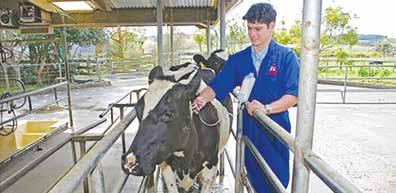

“It doesn’t matter where you live in NZ, the reality is there’s a responsibility to be culturally aware. In doing that, you have a far better chance of having a relationship with your patients and therefore being more effective as clinicians.”
Kahu adds that, in August, Kaikōura will be hosting students from Otago University.
JESSICA MARSHALL jessica@ruralnews.co.nz
A NEW report into the education of veterinarians has revealed a sustainability crisis within the sector.
The Rethinking Veterinary Education report from Veterinary Schools of Australia and New Zealand, released last month, is the first such report into veterinary education in over 20 years. It details a series of factors, including the funding models of veterinary education, sustainability in domestic and agricultural practice, and retention of veterinarians in both urban and rural areas that could lead to a severe crisis.
New Zealand Veterinary Association (NZVA) president Kate Hills says the sector is facing a number of challenges currently.
“We’ve got a global veterinary shortage and then this review high-
lights the fact that, as well as the workforce shortage, we’ve got the increasing demand of veterinary services in New Zealand across the whole sector,” Hills told Rural News She says that, additionally, the
report highlights there is inadequate funding of veterinary schools to meet the cost of teaching future vets.
The report states that veterinary courses are the most expensive professional courses for universities to deliver. It says that the funding per veterinary student to universities from government grants and student fees only covers approximately twothirds of the average estimated total delivery cost per student.
Additionally, it states that incremental opportunities to reduce costs have largely been exhausted and more strategic, structural reforms are required.
Hills says that compounding the
cost of educating veterinary students is the salaries those students are then provided when they qualify.
“The veterinary salaries, once they’ve graduated, are becoming uncompetitive with other professions. Other professions have been increasing and the veterinary salaries haven’t been increasing as much,” she adds.
Hills says that building a new veterinary school will not solve the issues at all. “The ultimate change is to improve the education crisis and try and be graduating more veterinarians, have a well-funded university model and happy, healthy university staff and students and veterinarians.”
RURAL NEWS // AUGUST 1, 2023 NEWS 13
LEO ARGENT
The report highlights there is inadequate funding of veterinary schools to meet the cost of teaching future vets.
Co-op power!
THINK CO-OPERATIVES and some of our biggest agribusiness companies – Fonterra, Zespri, Alliance Group, Silver Fern Farms, Farmlands, LIC, Ballance, Ravensdown and Tatua – come to mind.
Owned by farmers and growers, they drive the economy, by earning the country billions of dollars exporting quality products and by providing services and raw materials behind the farmgate.
In export markets around the globe, these co-operatives carry for the torch for New Zealand’s clean green credentials and their quality consumer products and ingredients are much sought after.
But sadly, these co-operatives aren’t getting the recognition they deserve at home, thanks to a lack of understanding of the co-operative model by politicians and policymakers. There are also misconceptions about the business model that fundamentally goes back to a lack of education about co-ops.
Two years ago, research by PricewaterhouseCoopers (PwC), to showcase the scale of the co-op business community, produced shocking results. Individuals who should know, or need to know, have limited knowledge about the co-op model.
The umbrella body for co-operatives, Cooperative Business NZ (CBNZ), has its work cut out.
As CBNZ chief executive Roz Henry says, this is something that she’s constantly amazed at and working to resolve.
CBNZ hosts multiple engagements with the various political parties and ministries and spends much of its time building an understanding of the co-op business model and co-operative businesses themselves to change their underlying misconceptions.
Henry admits this is required before they can even start to consider the opportunities they present.
Tackling the myths around co-operatives is also a priority for CBNZ.
One myth that needs to be tackled is that the business model is “out of date or non-mainstream”. When one looks at enduring brands like Anchor and Tatua, it quickly becomes apparent this is not the case. They are two of our most successful.
NZ remains one of the most co-operative economies in the world. The stats are staggering: our co-operatives continue to be showcased in the Top 300 World Co-op Monitor, including Fonterra, Zespri, Foodstuffs North Island, Foodstuffs South Island, Alliance Group, Silver Fern Farms and Farmlands.
RURALNEWS
TO ALL FARMERS, FOR ALL FARMERS
HEAD OFFICE POSTAL ADDRESS: PO Box 331100, Takapuna, Auckland 0740 Phone 09-307 0399

PUBLISHER: Brian Hight Ph 09 307 0399
GENERAL MANAGER: Adam Fricker Ph 021-842 226
CONSULTING EDITOR: David Anderson Ph 09 307 0399 davida@ruralnews.co.nz

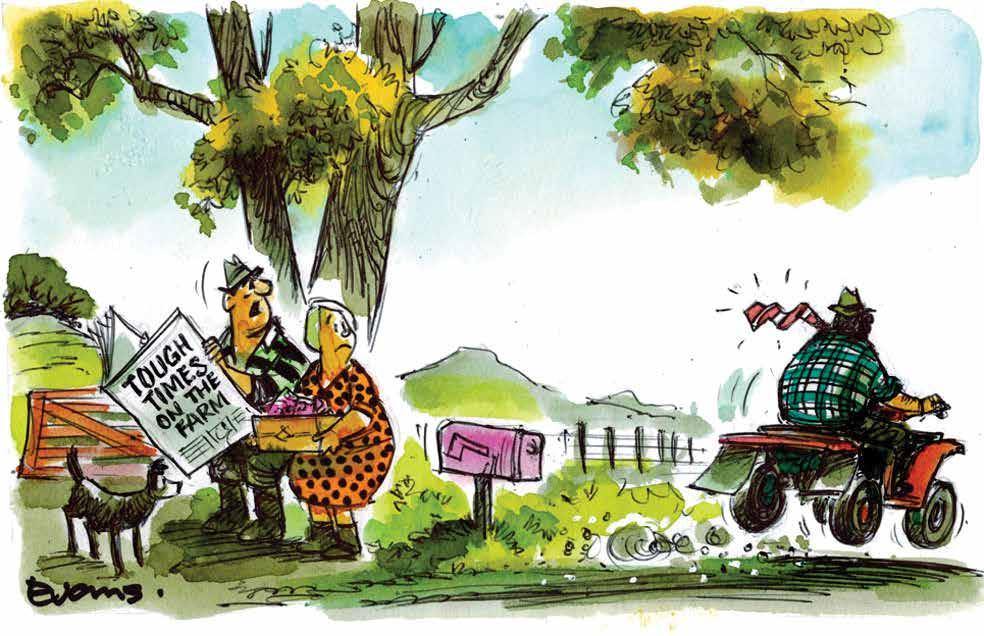
THE HOUND
Full of it!
The Hound reckons the country’s woolgrowers, already outraged by the Ministry of Education’s recent decision to award an American company the contract to install nylon carpet in 800 rural schools around the country instead of wool, now have an even bigger gripe with the Government and its so-called focus on sustainability.
Remember when Minister of Agriculture Damien O’Connor claimed at the establishment of the Wool Working Group and Wool Impact Ltd that it would be “fantastic if strong wool became the first choice of fibre in homes, schools and businesses”? However, even the Government’s own state housing entity hasn’t take any notice, because over the past six years, Housing NZ has installed some 600,000 sq metres of nylon carpets – not wool – in its taxpayerfunded new builds. This is just more proof that this Government is all talk and no action when it comes to supporting the ag sector.
Lucky escape!
Yours truly was reminded of the long-standing dodgy behaviour of former patron of the arts and meat industry magnate Sir James Wallace after his recent public naming as a convicted sex offender. It appears Wallace’s fondness for young men was not limited to those in the arty-farty scene. Some 20 or so years ago, a young cub reporter from this very publication organised to interview Wallace about his life-long interest in meat and flesh (the bovine kind) at his now infamous Auckland mansion. However, after returning to the office, said cub reporter was rather shaken and confused about his weird interaction with Wallace. He was especially confused of the older man’s insistence on showing him around his house and viewing his artworks. Luckily, the young journalist did not hang around, despite an invitation to stay for a meal and drink, and escaped alarmed but unharmed.
PRODUCTION: Dave Ferguson Ph 027 272 5372 davef@ruralnews.co.nz
Becky Williams Ph 021 100 4381 beckyw@ruralnews.co.nz
REPORTERS: Sudesh Kissun Ph 021 963 177 sudeshk@ruralnews.co.nz

Peter Burke Ph 021 224 2184 peterb@ruralnews.co.nz
MACHINERY EDITOR: Mark Daniel Ph 021 906 723 markd@ruralnews.co.nz
Say what?
A mate of your canine crusader reckons the Labour Party’s recently unveiled slogan for the upcoming election – ‘In it for you’ – is not only meaningless and confusing, but also could have some rather unfortunate connotations. He suggested that by simply changing the slogan to ‘In it for ewe’ it could be viewed as Labour trying to court the farmer vote. However, he suggests it is more appropriate – considering the way the Labour Government has treated the farming sector over the past six years – that the ‘In it for ewe’ slogan is a fitting metaphor for the way Labour has screwed farmers during its term in government!
Deafening silence
This old mutt notes that the latest figures from Stats NZ show that in the quarter ending December 2022, the country’s ag sector decreased its emissions by 1.3% (132 kilotonnes). All this was achieved without the implementation of an emissions levy or the introduction of the much criticised and deeply unpopular He Waka Eke Noa (HWEN) scheme some industry leaders and the Government want to foist on the sector. Since 2014, NZ’s ag sector has actually reduced its methane output by 7% and nitrous oxide by 1.5%. However, despite these great achievements, not a word of praise for the sector efforts has come from the likes of the Government, the Green Party or multi-national, non-taxpaying lobby group Greenpeace. In fact, the lack of recognition by such regular vocal critics of the ag sector has been deafening. No surprise there!
AUCKLAND SALES REPRESENTATIVE: Stephen Pollard Ph 021 963 166 stephenp@ruralnews.co.nz
WAIKATO SALES REPRESENTATIVE: Lisa Wise Ph 027 369 9218 lisaw@ruralnews.co.nz
PRINTED BY INKWISE DISTRIBUTED BY REACHMEDIA
WELLINGTON SALES REPRESENTATIVE: Ron Mackay Ph 021 453 914 ronm@ruralnews.co.nz
SOUTH ISLAND SALES REPRESENTATIVE: Kaye Sutherland Ph 021 221 1994 kayes@ruralnews.co.nz
DIGITAL STRATEGIST: Jessica Marshall Ph 021 0232 6446
RURAL NEWS // AUGUST 1, 2023 14 OPINION EDITORIAL EDNA
Want to share your opinion or gossip with the Hound? Send your emails to: hound@ruralnews.co.nz Not funded by NZ On Air
“He’s taken a job in town!”
Rural News is published by Rural News Group Ltd. All editorial copy and photographs are subject to copyright and may not be reproduced without prior written permission of the publisher. Opinions or comments expressed within this publication are not necessarily those of staff, management or directors of Rural News Group Ltd.
F&G back Nat’s new policy
THE NATIONAL Party’s support for hunting and fishing recognises the valuable contribution anglers and hunters make to the country’s conservation efforts and the importance of trout, salmon and game birds to help feed families across the country.
As part of its hunting and fishing policy, the National Party has announced it will create a Hunting and Fishing Minister, support Fish & Game, protect trout and salmon fishing and give hunters and anglers a voice through permanent seats for hunting and fishing on the Conservation Authority and Conservation Boards.
The policy also guarantees access to public land for hunting and fishing.
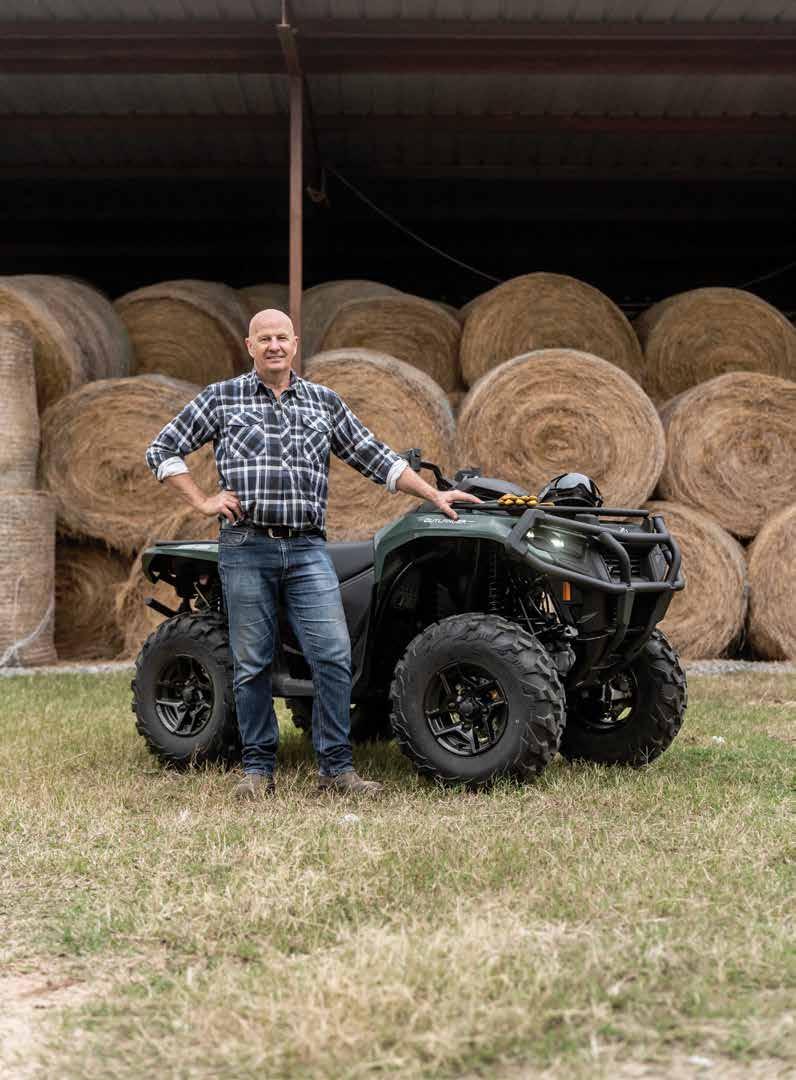
Kiwis from all walks of life value access to New Zealand’s natural environment and fish and game resources. Angling and hunting are deeply embedded into the fabric of our rural communities, towns and cities across the country.
Mental health, wellbeing and the opportunity to spend quality time with friends and family in the great outdoors are the key reasons why New Zealanders and international visitors hunt and fish. Conservation, pest management, and the ability to feed their whānau are also major drawcards. That’s why we support any initiative that acknowledges and celebrates the contribution of anglers and hunters.
We are particularly pleased the National Party’s policy includes permanent seats for hunting and fishing on the Conservation Authority and Conservation Boards. Our anglers and hunters are at the vanguard of the country’s conservation efforts and deserve a greater voice and greater credit for their massive contribution.
It is also encouraging that the policy recognises
there is a place in New Zealand’s eco-system for valued introduced species such as game birds, trout and salmon alongside other waterfowl and freshwater species.
Trout and salmon have some of the highest fresh water quality and quantity requirements out of our freshwater species. This has enabled Fish & Game to argue for water quality and quantity standards that have protected not just the species under our jurisdiction but all freshwater species, including those that are taonga and valued by mana whenua.
We’re pleased politicians from all parties are listening to us. Parliament’s Environment Select Committee recently recommended the Government enshrine the protection of the hab itat of trout and salmon alongside the protection of indigenous species in the planned Natural and Built Environment Act.
Anglers and hunters are dedicated nature lovers and conservationists, protecting and rewilding New Zealand’s natural habitats, which is so important for future generations, she says.
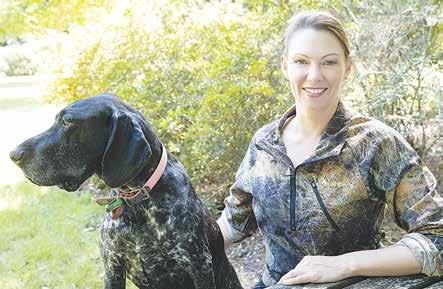
Fish & Game and our licence holders are the country’s leading freshwa ter champions. We have an outstanding record of achievements in protecting and enhancing the environment, including creating, restoring and protecting wetlands.
We have been respon sible for securing 12 of the 15 Water Conservation Orders, the highest level of protection that can be afforded to any water body. We have fought long and hard to protect our outstanding water bodies from pollution and exploitation so they are safe for swimming, gathering food and fishing. It is critical New Zealand’s policy settings reflect this and allow the vital work to continue.
Fish & Game is 100% funded by hunters and anglers – we don’t get a cent from the New Zealand taxpayer. This user-

RURAL NEWS // AUGUST 1, 2023 OPINION 15
CORINA JORDAN
pays, user-says system contributes to the greater New Zealand good by protecting the environment, protecting and cre-
and anglers.
• Corina Jordan is chief executive of Fish & Game NZ
F&G chief executive Corina Jordan says the policy recognises the valuable contribution anglers and hunters make to the country’s conservation efforts. @rural_news
Could the paradigm be shifting?
DOUG EDMEADES

ACCORDING TO
Google, “A paradigm shift is a fundamental change in the basic concept and experimental practice of a scientific discipline”.


The realisation that Earth is not at the centre of our solar system was a paradigm shift; So too the understanding that the Earth was not flat. Things tick along for some time as “normal” and then something happens –a new discovery, for instance – and the whole way we look at things changes.
Our paradigm shifts.
I witnessed one of these moments the other day listening to an American physicist, Dr Tom Sheahen, talking in particular, about the greenhouse gas methane. His conclusion, based
on recent fundamental research by Wijngaarden and Happer, was clear: When compared to the other GHGs i.e., water and carbon dioxidemethane is irrelevant!
Relative to the thinking behind He Waka eke Noa, which is based on IPCC models, this is a paradigm shift. The belief that methane has any practical effect on the earth’s temperature is false and therefore taxing methane is irrelevant.
Step back a little. The Earth absorbs and emits energy from the sun. In the absence of greenhouse gases (GHGs) the emitted energy would pass through the atmosphere out into space. But some of this energy is absorbed by the GHGs (water, carbon dioxide, methane and nitrous oxide) and then re-emit-
ted in all directions –some coming back to Earth and warming it.
The net effect of this
coming and going of energy is that the temperature of the Earth is about +15 degrees cen-
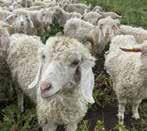

RURAL DELIVERY
tigrade. Without these GHGs it would be about -18 degrees C. GHGs keep the Earth warm by ‘trapping’ some of the energy emitted by the Earth. This emitted energy doesn’t come in ‘bulk’, but in certain defined frequencies – just like radio waves but on a grander scale. The frequency of the emitted energy depends in part on the physical-chemical properties of the individual gases. It just so happens that water “operates” across a broad spectrum of frequencies, whereas carbon dioxide and methane have very narrow bands, which are in fact overlapped, and to some extent masked, by the water spectrum.
The concentration of the four GHG gases in the atmosphere is also an important factor. Water ‘weighs in’ at about 15,000 ppm, carbon dioxide about 400 ppm and methane less than 2 ppm. Nitrous oxide is irrelevant at this scale. When the concentration of the GHGs is considered, together with the respective emission spectra, the calculations show that water dominates the scene and makes up about 85% of the GHG effect with carbon dioxide at about 15% and methane is irrelevant.
How come? How and why is this so different from the narrative that the IPCC and its followers, i.e. your government and its agencies, have been promulgating?
First up, the IPCC believes, based on their models, that water enhances the GHG effect of carbon dioxide, viz. an increase in carbon dioxide, resulting in an temperature increase that increases the amount of water in the atmosphere, which in turn enhances the warming.
We have heard this story ad nauseum recently as an explanation for the recent high intensity flooding events in New Zealand. This cannot be true because it would result in runaway global warming, which clearly has not occurred on Earth on a geological scale of time.
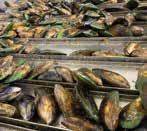
The IPCC models are problematic for another more telling reason. The calculations and hence conclusions regarding the effects of the various GHGs are based on an atmosphere which does not contain water! Not only is it missing the point about the important role of water, it is also the reason why it can glibly claim that methane is 28 times, and nitrous oxide 300 times, more
potent than carbon dioxide.
With Wijngaarden and Happer’s proven model, we can at last do some numerical experiments. It turns out that increasing the current methane concentration will have a negligible practical effect on the Earth’s temperature.
Hence developing policies to limit methane emissions is a waste of money. So too, increasing the atmospheric carbon dioxide concentration from its current level will have negligible effect on temperature.
Who to believe? It is now accepted that the IPCC models over-estimate the current and projected temperature of the Earth by several degrees, relative to the observed temperatures coming from the satellites.
It is standard scientific practice to abandon, or modify, models if they are inconsistent with the empirical data. In the case of Wijngaarden and Happer the calculated emissions from the GHGs agree with the data coming from the satellites. QED.
• Doug Edmeades spent 20 years as a MAF soil scientist at Ruakura and in 1997 established his own science consulting business agKnowledge.
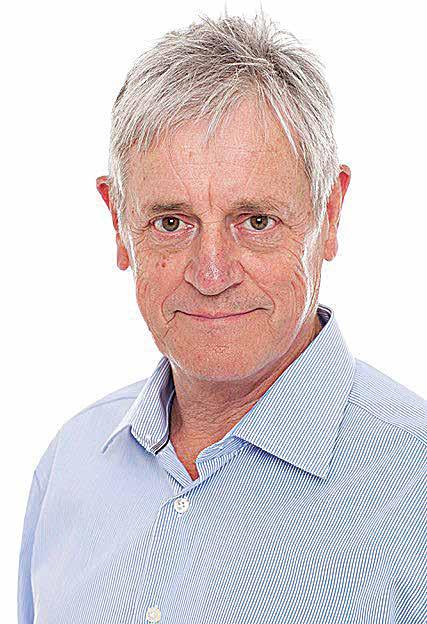
DESTINATION POLARIS
SUNDAY 27 @ 8.30PM

GRAB YOUR HELMET AND HEAD FOR THE TRAIL!
IT’S ALL ABOUT ADVENTURE, THE OUTDOORS, AND THE WORLD OF RESPONSIBLE RIDING - FROM SAND DUNES TO MOUNTAIN PEAKS, CANYON RIDES TO MUD PITS, DESTINATION POLARIS IS YOUR AUTHORITY FOR ALL-TERRAIN TRAVEL.

JOIN HOSTS, JARED CHRISTIE AND ALEXA SCORE EACH WEEK AS THEY UNCOVER THE WORLD’S TOP RIDING DESTINATIONS. PLUS, PROJECT ‘X’ TURNS AN EVERYDAY MACHINE INTO THE BIGGEST, BADDEST, UTV VEHICLES ON THE MARKET.

RURAL NEWS // AUGUST 1, 2023 16 OPINION
READING THE PAPER ONLINE HAS NEVER BEEN EASIER RURALNEWS HEADER Ferist et quati aut pedici te vollab imod quamet atur soleniet quiatibu. PAGE 15 HEADER Ferist et quati aut pedici te vollab imod quamet atur soleniet quiatibu. PAGE 23 HEADER Ferist et quati aut pedici te vollab imod quamet atur soleniet quiatibu. PAGE 24 TO ALL FARMERS, FOR ALL FARMERS Read us until the cows come home! ❱❱ Breaking news ❱❱ Management ❱❱ Animal health ❱❱ Agribusiness ❱❱ Machinery & Products reviews ❱❱ Competitions... and much more All the latest stories and more at www.ruralnews.co.nz NEW IN AUGUST *Conditions apply. Only available to SKY direct customers with at least SKY Starter and a SKY box in the home. Country TV costs $18.40 per month in addition to your standard monthly subscription and is subject to SKY’s standard terms and conditions. For full terms and conditions visit countrytv.co.nz/terms-and-conditions/ Prices are correct as at 1 October 2021, are payable in advance and subject to change. SUBSCRIBE AT SKY.CO.NZ OR CALL 0800 759 759 HOME OF RURAL NEW ZEALAND NEW SEASON PREMIERE FRIDAY 11 @ 9.30PM THIS SEASON OF RURAL DELIVERY IS FOCUSSED ON THE EXCITING NEW DIRECTIONS OUR NEW ZEALAND LOCAL FOOD AND FIBRE PRODUCTION SECTORS ARE TAKING. WE MEET PEOPLE AND ORGANISATIONS ACROSS OUR PRIMARY SECTORS WHO ARE WORKING HARD TO PROTECT AND PRESERVE THE ENVIRONMENTS THEY OPERATE AND LIVE IN, FOR THE SAKE OF ALL NEW ZEALANDERS. PREMIERES
Doug Edmeades says the belief that methane has any practical effect on the earth’s temperature is false and therefore taxing methane is irrelevant.
Rural News August 2023.indd 1 2/07/2023 10:32:27 am
Farm software and recording companies joining forces
FARM REPORTING software company Trev has acquired Cloud Farmer, a pioneer of farm recording in New Zealand.
Cloud Farmer was one of the first farm recording apps available in New Zealand, founded a decade ago by Porangahau farmers Gretchen and Leyton King.
Gretchen King says ten years on, in an evolving farming environment, the time is right for the next generation of the product.
She says having built a solid base of progressive red meat farmers within the Cloud Farmer business, the union with Trev is a logical next step and has been well received by
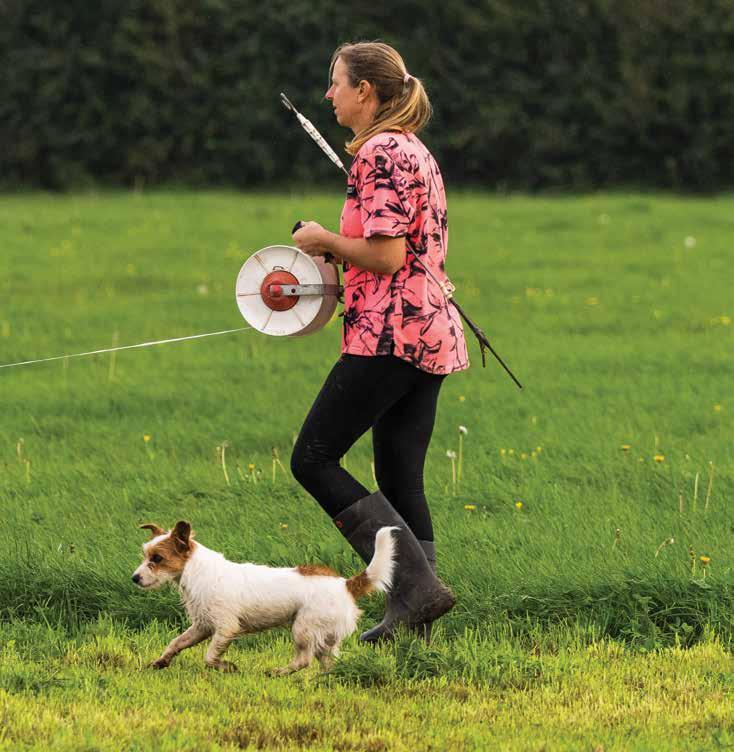
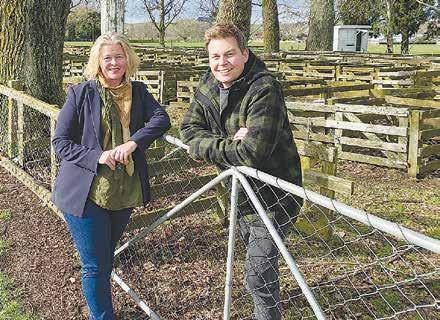
customers. “Trev is a likeminded Kiwi business with a farmer first mentality. They’ve paved the way in the dairy reporting space and their tool is quickly becoming a favourite for farmers.
“The team have very similar values to our own, and are driven to enable Kiwi sheep, beef and deer farmers to get the most from their farm as we enter a new era of recording and reporting.
The amalgamation comes at a time when farmers are being presented with overwhelming choices in farming software and technology options.
Trev chief executive Scott Townshend says
the union of Trev and Cloud Farmer provides an opportunity to align the sector and deliver a best in breed solution for
farmers in the recording and reporting space.
“As our first acquisition and an entirely new growth pathway, it’s
the beginning of something big for all involved. Trev and Cloud Farmer are well paired to complement each other’s
strengths and eliminate any gaps currently in the market.
“Together we will be able to do some great things for Kiwi farmers, providing new functionality and insights that we know will be well received by customers and downstream stakeholders. There is a lot of very exciting technology coming to the fore in the ag industry - automation, AI and predictive insights will all play a large role in the sustainable future of food and fibre in New Zealand.
“It really should not be about having one system for dairy and one for red meat but reporting that works for all
farmers. At the end of the day, we are all food and fibre producers, with similar goals to consumers, producing what they want in the most efficient manner possible, while preserving and improving the land we rely so much upon.”
Launched in 2018, Trev is used by Kiwi farmers to manage their farm reporting requirements to help drive onfarm excellence. The Cloud Farmer app acts as an online farm notebook for recording, storing, and sharing day-to-day farm information. The app supports digital recording of tallies, staff hours, drench records and logs hazards.
A flexible account that gives
the confidence to plan ahead
RURAL NEWS // AUGUST 1, 2023 AGRIBUSINESS 17
Cloud Farmer founder Gretchen King and Trev chief executive Scott Townshend.
you
Farming can be changeable to say the least, with the Rabobank All In One account you can manage that change Our All In One account combines transaction, working capital and term loan facilities. Make the most efficient use of your funds, get on top of your finances, and have fast access to working capital when you need it. Get the flexibility you need to manage your business, call 0800 500 933 Lending criteria and terms and conditions apply. For more information visit www.rabobank.co.nz
A ray of hope for farmers?
FAST CHANGING TECH
THE FINANCIAL viability of farmers having solar panels on their land, as well as stock, is the subject of a significant two year research study being undertaken by Massey University.
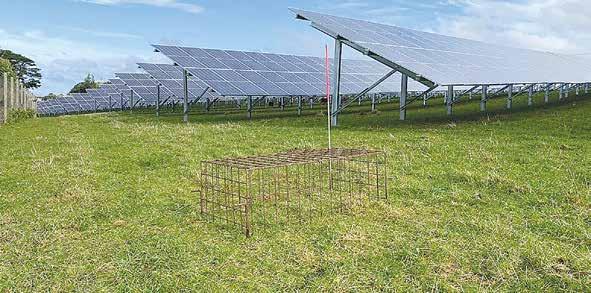
Professor Paul Kenyon is co-leading the project and says there has been a lot of hype about the value of installing solar panels on farms to generate electricity for the national grid, providing a new income stream.
But he says much of the data that is being put around is based on overseas research, where climatic conditions are quite different to those in NZ.
“A lot of that information suggests that pasture grown under the panels
SOLAR PANEL technology for on farm use is increasing rapidly with innovations such as panels that move to capture the sun all day.
There are also panels that actually let the light go through them. Massey University is hoping to get more partners to participate in the research programme and to set up trial sites right around the country so that there will be some hard scientific data available for farmers to make decisions on whether or not to go solar.
will be the same or better than in the actual paddocks,” Kenyon told Rural News
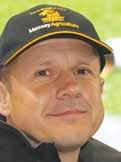
“But we are a wetter environment and we want to be able to provide NZ farmers with accurate information on how much pasture they will be able to grow.”
He says they want to find out if the overseas data is relevant to NZ and in the seven months they have been working on the trial, this doesn’t seem
to be the case. Kenyon adds that given the somewhat fragile nature of the panels and the fact that they are fixed, it is only possible to graze sheep or cattle of 150kg or less under them.
The project is looking at how much pasture can be grown under the panels and in particular its quality and the nature of pasture grown around the panels.
“In the seven months’ work we have done, it
www.ruralnewsgroup.co.nz
showed that 84% less pasture was grown directly under the panels and what was grown under them was basically unproductive weeds species,” Kenyon explains. “But pasture growth increased by 34% in the
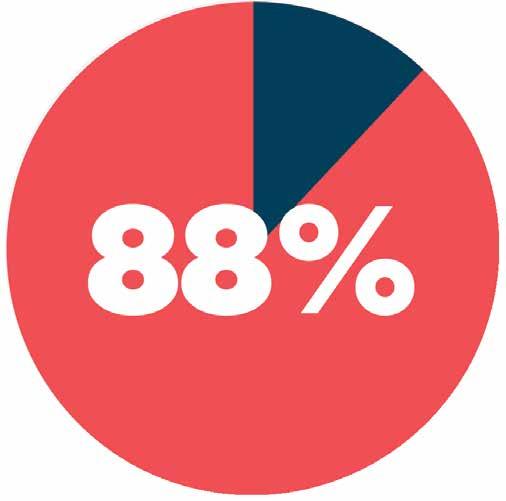
areas in between the panels, which suggests that this pasture benefited from the warmer soil created by the panels.”
He says another problem that has emerged is the high risk of facial eczema created by the panels and his team is looking closely at this.
Professor Danny Donaghy, who co-leads the study, says that direct shading under the panels is likely to have a negative influence on pasture growth, unlike some previous international research in generally hotter and drier climates.
“These results could be used to inform the
design of future mixed solar and pastoral farms in New Zealand, including ideal height from the ground and spacing between the rows of installed panels,” he told Rural News. “This would be a win-win for solar farming coexisting with pastoral systems, or even horticultural crops.”
WILL CALL OR VISIT WEBSITE ABOUT PRODUCTS & SERVICES THEY’VE READ ABOUT IN RURAL PUBLICATION
Source: Nielsen CMI Rural Survey 2002
COMMERCIAL FARMERS ARE HIGH VALUE READERS AND BIG USERS OF RURAL PRINT
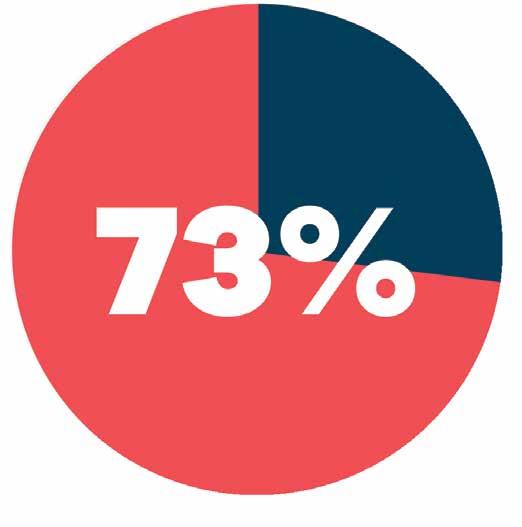
RURAL NEWS // AUGUST 1, 2023 18 MANAGEMENT
peterb@ruralnews.co.nz
PETER BURKE
HORTNEWS RURAL NEWS TO ALL FARMERS, FOR ALL FARMERS
Solar panels on the farm in Taranaki where the trial is taking place (Inset: Paul Kenyon)
Mineral boosts a smart way to lift lamb production
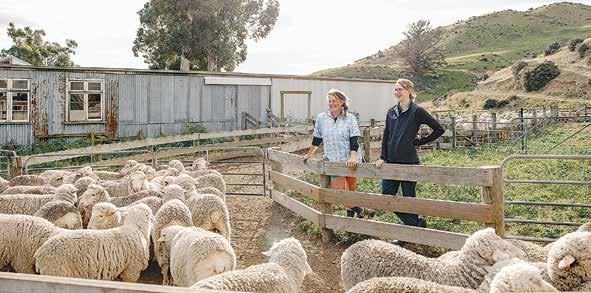
COBALT (AS vitamin B12) and selenium are well recognised as essential trace elements for successful sheep farming in NZ.
However, young growing lambs are most susceptible to deficiency and have the highest B12 requirement of any stock class, at the same time of the year that cobalt levels are lowest in their diet. Every day that lambs are below adequate in their vitamin B12 levels will result in compromised growth rates, meaning reduced profit for a farming operation.
SMARTSHOT has provided New Zealand farmers with a convenient and long-acting vitamin B12
and selenium solution to boost growth rates and support livestock health for approximately 20 years. Developed with world-first research and technology, it is said
to be one of the most researched trace element products in New Zealand. Numerous trials support its use across various stock classes - from adult dairy cows, calves and
THE TAIL END OF M.BOVIS?
THE COUNTRY is in the tail end of the Mycoplasma bovis outbreak, according to the Government.
Background surveillance is showing that the disease is not widespread across the national herd, says M. bovis programme director Simon Andrew.
“This is positive and indicates we are in the tail end of the M. bovis outbreak,” Andrew told Rural News
“The eradication journey is made up of three phases: delimiting (looking for active disease), provisional absence and confidence of absence. With our extensive background surveillance turning up less and less, we are increasingly confident we are nearing the end of the delimiting phase.”

Eradicating M. bovis has been an expensive exercise for the Government and farmers. The programme has spent $758 million to date, including compensation and industry contribution.
There is one active confirmed property in mid-Canterbury. Andrew says all 2900 cattle on the property have been culled. Repopulation is underway for the areas that have had restrictions lifted. The restricted place is expected to be fully revoked in early August.
However, the Government and farmers are still running extensive background surveillance screening in both the dairy and beef sectors – through bulk tank milk (BTM) testing and national beef and drystock surveillance respectively. BTM surveillance data collected over the
M. bovis in numbers
• 186,340 cattle culled
• 3.27 million tests completed

• $248 million compensation paid
• 2896 claims paid
• 18 claims being progressed
past 12 months has revealed zero confirmed infected dairies.
MPI notes that throughout the year, there are many opportunities for M. bovis to enter a herd. This could include buying in new stock, heifers returning from grazing, introduction of bulls, and breakins from neighbouring properties.
“Regular BTM screening is conducted throughout the year as it is important that dairies are screened at different stages of the lactation cycle to give us the best chance of detecting infected dairies,” Andrew explains.
“Every dairy farm in New Zealand supplying milk for commercial processing has a BTM sample tested at least monthly, using the samples tanker operators take at the point of collection. No action is required from farmers.”
The programme has reinstated fortnightly BTM screening between July and September this year.
“Over the last five years, we have observed the ability of the ELISA test to detect infection ‘sensitivity’ is high in early lactation. By undertaking BTM screening fort-
ewes through to lambs.
SMARTSHOT B12 and SMARTSHOT B12 Plus Se are commonly used in lambs at docking/tailing or weaning. These products aim to boost and
maintain adequate vitamin B12 and/or selenium levels during the critical period of rapid growth.
The vitamin B12 in SMARTSHOT is encapsulated within different
sized microspheres, the smaller of which break down in body fluids faster than the larger, thus giving extended efficacy and flexibility. This means the dose of a single injection can be tailored to last lambs for 3-4 months (if going to slaughter) or 6-8 months (for replacements).
With fewer injections there is less stress on lambs, less labour onfarm and the sustained trace element levels mean consistent and maximised growth rates.
Veterinarian Erin Riley recommends SMARTSHOT to farmers because it’s a long-acting, single injection making it an easy, effective way
to help your lambs reach their growth potential.
As recommended by Beef + Lamb NZ, lambs are best treated with B12 at docking/tailing – as they should be treated as early as possible. NZ trials, carried out by AgResearch, demonstrate greater liveweight gains in animals treated at docking/tailing.
With gains as little as 5 grams per day, this can provide a return on investment on SMARTSHOT and means that even flocks with marginal deficiency could benefit.
To learn more about SMARTSHOT products, ask your vet or visit www.smartshot.co.nz
nightly in this period, we increase the opportunity to detect infected herds quickly.
“As with previous years when we have tested fortnightly, this additional screening won’t impact the routine milk quality/composition testing that farmers already provide. This change is designed to reduce the risk of missing any infection that potentially remains.”
This spring, 2021-born heifers are entering the milking herd for the first time and in many cases, it will be the first time these animals have been tested for M. bovis.
The national beef and drystock surveillance provides comprehensive screening of the beef sector via the following three streams: onfarm beef and drystock cattle sampling, sampling at meat processors, and feedlot testing (on entry).
All streams aim to provide ongoing evidence that infection is not widespread in the beef and drystock sector.
“We know on-farm testing can be disruptive and we are conscious of the impact this has on farmers,” says MPI.
“For this stream, cattle on beef and drystock properties are blood sampled and tested for M. bovis by local vets, working with farmers to undertake sampling while cattle are yarded during routine farm management activities such as pregnancy testing, drenching, or vaccinating. This approach is intended to minimise the impact and disruption to farmers as much as possible.”
RURAL NEWS // AUGUST 1, 2023 ANIMAL HEALTH 19
Your life may depend on this
Every day that lambs are below adequate in their vitamin B12 levels will result in compromised growth rates.
New look shearing shed design
WHILE MOST established sheep properties are likely to have a large traditional woolshed, many of these will be a little long in the tooth and craving some attention to maintenance.
This is not surprising when they are only used for a few weeks every year. Given the current economic climate for strong wool, it is also unlikely that many will receive any TLC in the foreseeable future.
While alternatives are a little thin on the ground, a South Island company has approached the logistics of the shearing shed from a different angle – with the PerkinZ ShearMaster System.
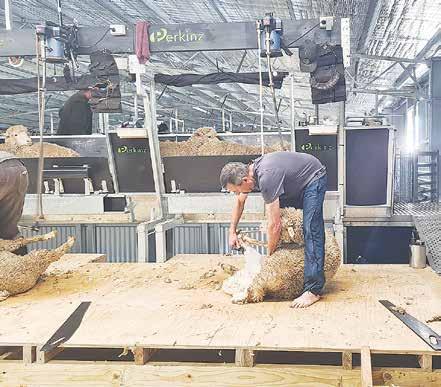
In traditional woolsheds, the majority of the internal floorspace is taken
up by holding pens that in turn feed the catching pen behind the shearing stands.
The ShearMaster System takes the form of a race that runs parallel to the shearing stands. The layout is said to significantly reduce the distance a shearer needs to move to grab an animal for shearing, typically only needing to move around a metre.
By contrast, using a traditional catching pen, the shearer needs to leave the stand, walk into the pen, grab an animal and return to his handpiece – typically a distance of three to four metres.
Wayne Perkins explains that with a typical shearer dealing with around 250 animals of up to 80kg each day, the improved presentation and reduced “capture” distances can typically add up to an
extra 20 shorn sheep to daily tallies.
With 15 years of shearing experience, including five seasons in the United Kingdom, Perkins found that race-type systems

that eliminated the “catch and drag” approach offered many benefits – including set-up and speed of operation.
“If a shearer is dealing with around 250, 80kg
sheep and dragging them three to four metres, that means he is handling 20 tonnes of sheep meat and moving them between 800 and 1000 metres,” he explains. “Moving them
using the ShearMaster System means moving that same 20 tonnes only around 120 metres.”
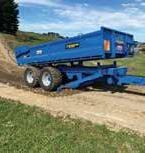
Perkins adds that there are also significant benefits for both the shearer and the animals: fewer stresses and strains, and a longer working life for the shearer.
Available in systems ranging from one to six stands, the company is already experiencing high levels of interest from Australia, where six installations have already been completed.
Perkins points out that the system requires significantly less shed space and capital expenditure compared to a new, sole purpose wool shed.
The system can be installed in a multipurpose shed that when not being used for shearing duties can
SNIPPETS
be used for storage of produce or even farm machinery.
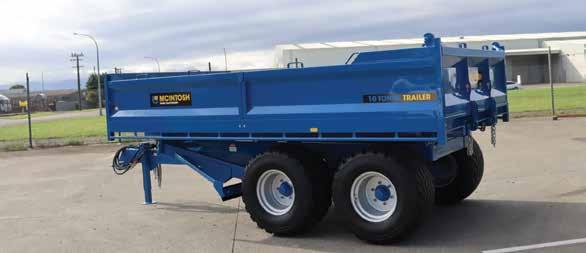

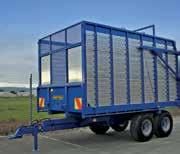
“There aren’t many professions where a worker takes a sweat towel to work and uses it all day,” Perkins adds.
“We set out to make a tough job easier and at the same time raise daily outputs by incorporating clever ideas, such as an opening race side that lets gravity drop the sheep onto the boards.”
He also points out that there is no technology to go wrong and no premium to pay.
“Our system is designed by a shearer, not by an engineer. The overriding consideration is both the shearers’ and the animals’ welfare, an area coming under greater scrutiny and oversight by regulatory authorities.” www.perkinz.co.nz
CLAAS Canterbury branches change ownership
IT’S ‘BUSINESS as usual’ at CLAAS Harvest Centres in Ashburton, Templeton, Timaru, Waipara and Westland, as they change ownership to the Landpower Group from the Carrfields Group.
Christchurch-based Landpower Group has now taken over possession of the five branches, which had previously been operated by the Carrfields Group under a franchise arrangement with Landpower.
Carrfields had represented the CLAAS Harvest Centre portfolio throughout the Canterbury, West Coast and Tasman farming regions since 1993. Landpower chief executive Richard Wilson says his organisation is committed to building on the long-standing relationships established by Carrfields.
“Our goal is to gear up farmers for success by providing access to some of the world’s leading farm machinery brands and providing an unmatched level of aftersales service and parts.
We are pleased to announce that 58 former Carrfields CLAAS Harvest Centre staff have elected to further develop their careers by accepting employment offers within the Landpower network.”
Carrfields will continue to represent other equipment brands that are not part of the CLAAS Harvest Centre franchise.
“Our machinery business in New Zealand will continue to import and distribute the MacDon, Novag, Coolamon, Anderson, Ziegler and Husqvarna brands, alongside Horsch that was added to the portfolio from 1 July 2023,” says Carrfields managing director Craig Carr.

Rolls-Royce opens new engine plant
ROLLS-ROYCE HAS opened a €30m assembly plant for its MTU 2000 Series engines, highlighting ongoing prospects for internal combustion engines using alternative fuels.
Located in Kluftern on Lake Constance, Germany, the new production facility, which currently employs 110 people, creates space for assembly and shipping.
Speaking at the official opening of the new plant, chief executive Dr Jörg Stratmann confirmed that Rolls-Royce is focusing on developing engines that can run on a wide range of sustainable fuels, and that the company has already launched hybrid systems, adding it’s the fuel that matters, not the engine.
“Renewable diesel (HVO/hydrogenated vegetable oil) is an important step on the road to decarbonisation,” he said.
“We are doing everything we can to make the internal combustion engine climate-neutral with sustainable fuels and in combination with new technologies. But this can only be achieved if the political framework conditions are set so that alternative fuels can be successfully ramped up.”
RURAL NEWS // AUGUST 1, 2023 20 MACHINERY & PRODUCTS
MARK DANIEL markd@ruralnews.co.nz
STRENGTH / QUALITY / PERFORMANCE PHONE: 0800 622 276 WWW.MCINTOSH.KIWI Tip Trailers 4.5 - 20 Tonne
The Shearmaster system can be installed in a multi-purpose shed that when not being used for shearing duties can be used for other uses.
Ag software companies join forces

VANTAGE NEW Zealand and Precision Farming are partnering with Trimble Agriculture with the aim of transforming NZ farming practices.
The companies used this year’s Fieldays to launch what they describe as a ground-breaking connection.
The connection between Trimble Agriculture’s vehicle guidance products, via Trimble Ag Software’s API and Precision Farming’s software platform, aims to introduce a seamless connection for farmers and rural contractors to digitise and automate fertiliser and spray application processes, inventory management and record keeping.
Vantage NZ co-founder Jemma Mulvihill says the collaboration supports the company’s goal of transforming farming practices across the country and providing farmers with enhanced options and greater efficiency.
She claims the move will offer farmers cuttingedge technology and expert knowledge to optimise their agricultural operations.
The partnership is also claimed to help streamline workflows and improve reporting accuracy, while maximising the use of both new and existing Trimble Agriculture equipment.
“With Trimble Ag Software now connected by Precision Farming, manual steps will be eliminated and proof of application will be automated,” Mulvihill explains. “The result will be more accurate and reliable application records for compliance reporting and decision making with minimal effort.”
Farmers utilising Trimble Agriculture’s vehicle guidance products will now also have the advantage of digital reporting for self-spreading. Meanwhile, contractors will be able to digitise their workflow and gain a work-in-progress view for fleet management.
With enhanced data management and analysis capabilities, farmers will be able to make more informed decisions and optimise their spreading and spraying practices. The aim of which is to ultimately improve productivity and reduce costs.
Precision Farming’s chief operating officer, Chloe Walker, says its partnership with Trimble Ag Software builds on the company’s efforts to help farmers easily manage their environmental data using smart technology and common sense.
“Farming today relies heavily on data, with an app or online platform for just about everything, often making things confusing and time-consuming,” she adds.
“Precision Farming’s world-class technology simplifies things by enabling different systems to work together and talk to each other. This means data from Trimble Agriculture enabled vehicles can now be automatically transferred to farmers’ Hawkeye or My Ballance accounts or spread/spray diary within Precision Farming.”
Walker claims that Trimble Agriculture’s integration with Precision Farming will give farmers peace of mind knowing exactly what has been spread where and when, as well as giving contractors a wider range of vehicle guidance technologies to choose from. www.vantage-nz.com
Rolling along for much better seedbed preparation
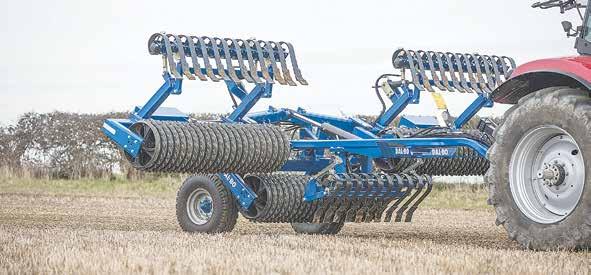
ROLLERS HAVE been around in agriculture for more than 200 years, probably used initially for ‘flattening’ uneven ground.
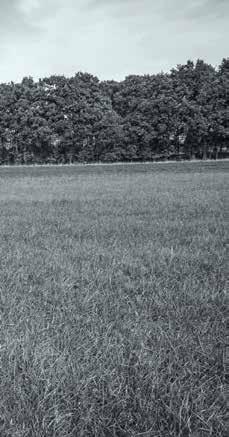
However, during the last century these machines have been primarily used for pre and post-drilling consolidation to ensure good seed-to-soil contact and reduced moisture loss.
Danish company Dalbo, formed in the mid-1960s, has formed an excellent reputation in this field – not least for its extensive range of conventional and system roller offerings.
Imported and distributed in New Zealand by Cambridge-based Giltrap Agrizone, the Dalbo MaxiRoll is offered in working widths from 4.5 to 9.5 metres, although the focus is on the 530 and 630 models.
It is described by the manufacturer as a 3-point system roller constructed around a heavy-duty 150mm by 100mm steel frame carried on 400-60R 15.5 tyre equipment.
Each of the roller “gangs” is suspended under the frame with the patented DuoFlex-system, ensuring that each roller section works independently.
This is allowed by slots in the hydraulic cylinder attachment points to deliver optimal contact across the full working width.
Meanwhile, the hydraulic cylinders –working in conjunction with heavy-duty spring assemblies – create downward pressure and weight transfer of at least 500kg per metre, while also allowing the rollers to closely follow changing round contours.
The roller sections are made up of 55cm, patented Snowflake rings assembled between alternate breaker rings. The Snowflake name is derived from the integral spoke design within each ring, which is said to be like that of a snowflake crystal – with the radial spokes lining up with the high points of the roller circumference. The design is said to be six times stronger than earlier designs of Cambridge rings, meaning that Snowflake rings are covered by a six-year warranty.
Elsewhere in the construction, roller assemblies are carried on
60mm diameter chrome/ molybdenum steel axles, supported by heavy-duty greaseable bearings. The option of rubber suspended bearings are said to give a cushioning effect and help prolong the working life of the machine.
The system configuration of the rollers sees a hydraulically adjusted cracker board fitted ahead of the rollers. This features 80mm wide spring steel legs fitted with 100 x12mm curved blades or clod crackers. This is ideal to break clods and level the surface ahead of the rollers. The working angle of the tines is adjusted via turn-
buckles, while depth is controlled hydraulically via a parallel swinging link suspension set-up. With a transport width of only 2.5 metres, the 530 and 630 models weigh in at 3205kg and 4050kg respectively. When fitted with Snowflake rings (109 and 129 pieces), the horsepower requirement is only 90 or 100hp. Standard equipment includes a parking jack and a road lighting kit. It also requires one double- and one single-acting remote for the base machine and an additional remote for the cracker boards. www.gaz.co.nz
EASYCUT FRONT MOWER
The EasyCut Front Mower is a versatile & innovative compact design. It includes all the benefits of a KRONE mower but with the additional flexibility of utilising either a pull type or push type headstock - either is available as an option, allowing optimal adaptability.
Low maintenance, high quality and dependable. Produce exceptional results with the Krone machinery

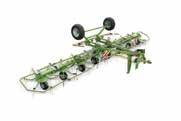

Invest in longevity and quality. Invest in the best.
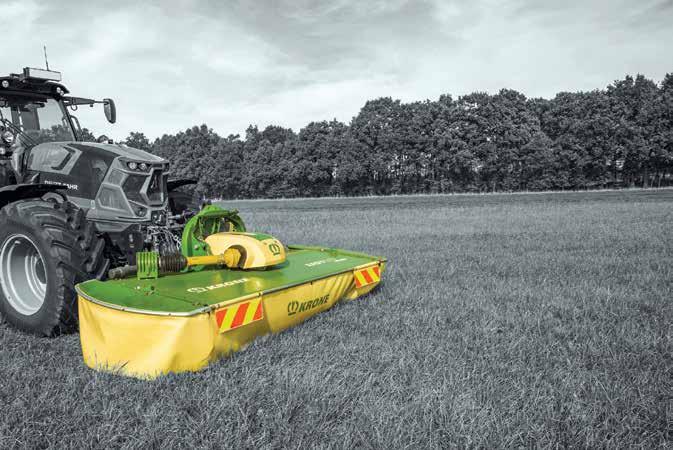
RURAL NEWS // AUGUST 1, 2023 MACHINERY & PRODUCTS 21
and www.precisionfarming.co.nz
MARK DANIEL markd@ruralnews.co.nz
MARK DANIEL markd@ruralnews.co.nz
Dealers located nationwide
The Dalbo MaxiRoll is offered in working widths from 4.5 to 9.5 metres.
Pictured: EasyCut F - Push Type
KW Series Tedder
range.
Swadro Rake
Te Pari expands its product line



OAMARU-HEADQUARTED TE Pari’s recent acquisition of Vet-
marker from Fenemor Innovations includes all trademarks and patents associated with the sheep docking apparatus.
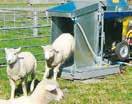
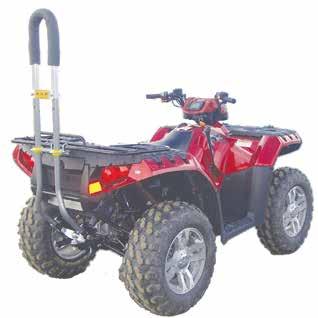
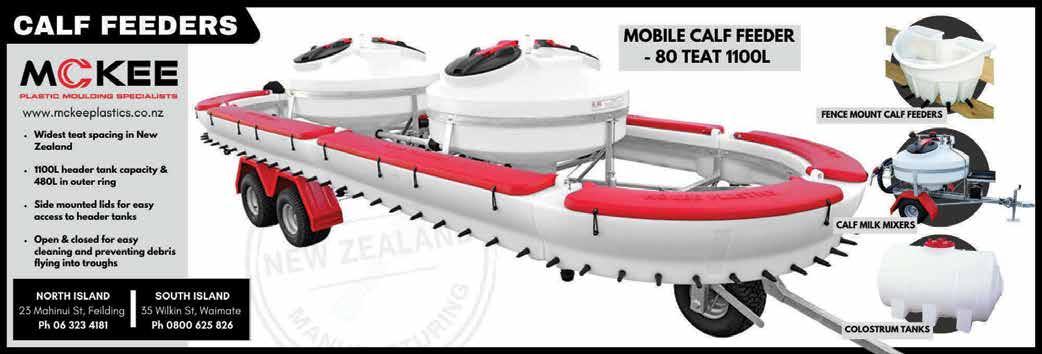
Te Pari says the range of patented products – created by Taihape farmer John Fenemor –have been designed to minimise lamb distress and increase efficiency during lamb docking and tailing procedures.
Lambs are placed into the apparatus and cradled by rollers as they move through the system, allowing farmers easy access for docking and tailing procedures.
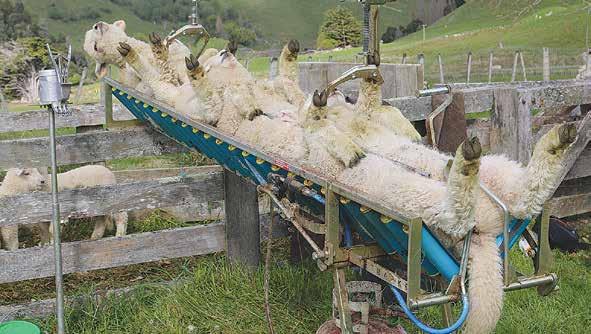
The Vetmarker prod-




uct range is patented, with bespoke features to ensure lambs land on their feet when exiting and a spray unit to mitigate flystrike.

Te Pari global sales manager Jeremy Blampied says the acquisition means the patented products will remain under Kiwi ownership and product manufacturing will shift from the North Island to Oamaru.
“We are delighted to introduce the state-ofthe-art Vetmarker products into our Te Pari offering,” he says. “They are complementary to our sheep-handling port-
folio and fit nicely within the livestock handling and animal management ecosystem.”

With a global distribution reach, Te Pari plans to export the Vetmarker system to farms around the world, particularly in Australia and the UK.
Noting a global shift towards precision animal management, where animals are managed on an individual basis – particularly in Australia and the UK – Blampied says the Vetmarker product range aligns with this. He adds that while NZ will always be a key market for Te Pari, there are now more
than 75 million sheep in Australia, and 20 million sheep in the UK.
Fenemor Innovations owner Gillian Fenemor says the time is right to sell the product line and she is thrilled the Vetmarker system will stay under Kiwi ownership with Te Pari.
“We started everything from scratch and are proud of what we have achieved over the years,” she says. “We have also been Te Pari customers for 25 years, so look forward to seeing the Vetmarker continue under their ownership.” www.tepari.co.nz
RURAL NEWS // AUGUST 1, 2023 22 MACHINERY & PRODUCTS / RURAL TRADER For a Quadbar, call me, Stuart Davidson, owner of Quadbar . Email sales@quadbar.co.nz or www.quadbar.co.nz QUADBAR Proven beyond doubt! “I have no doubt that if I did not have a Quadbar fitted, my accident would have been fatal!” – Rozel Farms “The Quadbar saved our employee from significant injuries.” –Colin van der Geest • ATV Carrier Mats • Exit/Entry Areas • Calf Trailers • Horse Floats & Trucks • Weigh Platforms • Bale Mats • Comfort Mats for Wet & Dry Areas • Utility Deck Matting Phone: 0800 80 8570 www.burgessmatting.co.nz Rubber Safety Matting LASER FF95 DIESEL HEATER 0800 379 247 www avonheating co nz ü Huge 9.5kW output. ü Made in Japan since 1991. ü Energy Efficient - 92% certified ü Safe, convenient and easy to useno mess, no fuss. ü DIY Install or we can arrange. ü No wood to cut, cart or store. ü NO indoor diese odours JACKET BIB OVERALLS LEGGINGS 100% Waterproof Flexible Fleece Collar Hood Visor Acid Resistant Durable Seams Stitched On Soles Plain Toe or Steel Toe 175% more crack resistant than normal leather earthwalk.co.nz 0800 16 00 24 9am-5pm PHONE BUY sizes: BOOTS 5 - 13 (NZ) RAINWEAR XS - 4XL free shipping FLEXISKIN RAINWEAR & BUFFALO BOOTS $185 $180 $120 $100 $90 valued at $320 valued at $260 valued at $190 valued at $170 valued at $280 Flexiskin Rainwear - there really isn’t another product to match it for durability, comfort & price. The flexible fabric stretches as you move - so you can get around easier. The hood visor will keep rain from driving into your eyes & the fleece collar will keep you cosy and warm when the wind is howling. The 100% waterproof outer layer keeps you completely dry even during a torrential downpour. FLY OR LICE PROBLEMS? The magic eye sheepjetter since 1989 Quality construction and options • Get the contractors choice 07 573 8512 | dipping@electrodip.co.nz – www.electrodip.com Featuring... • Incredible chemical economy • Amazing ease 1500+ per hour • Unique self adjusting sides • Environmentally and user friendly • Automatically activated • Proven effective on lice as well as fly • Compatible with all dip chemicals • Accurate, effective application
MARK DANIEL markd@ruralnews.co.nz
Te Pari recently acquired the Vetmarker lamb docking product range from Fenemor Innovations.
Since 1993



Fully Escorted Tours




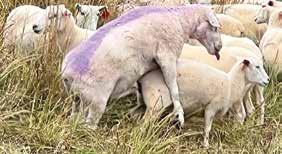






Nelson Bays & Marlborough


Oct 22, 2023 6 Days

Stay in sunny Nelson & Blenheim. Enjoy a Queen Charlotte Sound cruise, lunch & wine taste at Seifried winery, a Greenshell Mussel Cruise. Visit Motueka, Kaiteriteri, Abel Tasman National Park and Pupu Springs. Train to Omaka Aviation Centre.
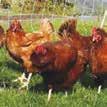
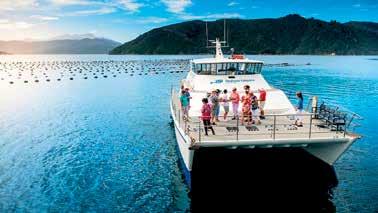
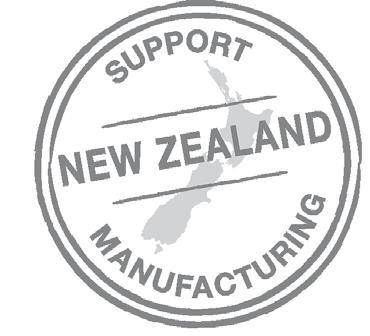
Forgotten Highway & Taranaki
Nov 7, 2023 + Feb 13, 2024 6 Days
Visit Hobbiton, travel 40km by Rail Cart into the Forgotten World - 10 hand dug tunnels and over 25 bridges. New Plymouth sightseeing tour, cruise aboard Paddle Steamer Waimarie, then Northern Explorer train back to Auckland.
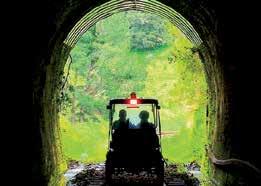

CULVERT PIPES

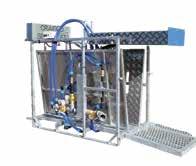


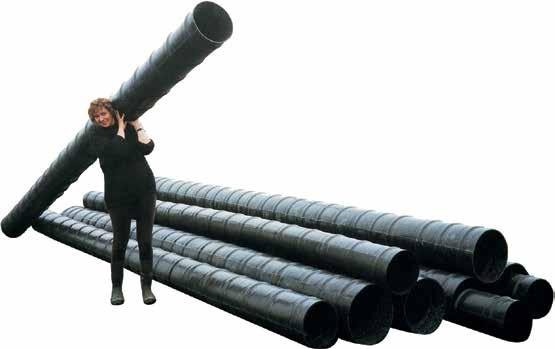


RURAL NEWS // AUGUST 1, 2023 RURAL TRADER 23 www.mckeeplastics.co.nz 300mm x 6 metre $410 400mm x 6 metre $515 500mm x 6 metre $735 600mm x 6 metre $989 800mm x 6 metre $1496 1000mm x 6 metre $2325 1200mm x 6 metre $3699 ALL PRICES INCLUDE G.S.T.
NORTH ISLAND 23 Mahinui St, Feilding Ph 06-323 4181 SOUTH ISLAND 35 Wilkin St, Waimate Ph 0800 625 826 Lightweight, easy to install • Water Troughs Water Transport Water Storage Single Dog Box – no steel work $625.00 Single Dog Box - with steel work $699.00 Wellside Dog Box $985.00 Flatdeck Dog Box $985.00 ALL PRICES INCLUDE GST BUT MAY INCUR FREIGHT NORTH ISLAND 23 Mahinui St, Feilding Ph 06-323 4181 SOUTH ISLAND 35 Wilkin St, Waimate Ph 0800 625 826 Ph 09 4362 794 or 0274 362 793 10 Hall Road, RD 5, Whangarei • lastrite@xtra.co.nz NEW ZEALAND HAND MADE BOOTS Made to order Visit www.lastrite.co.nz for more quality products C2211cbLastrite • Leather farming boots • Leather hunting & tramping boots • Work & Forestry high & low leg work boots tunnel houses www.morrifield.com t/f 03 214 4262 e info@morrifield.com Grow vegetables all year round T Very affordable and easy to install T New Zealand designed and made T 40 years producing tunnel houses T Range of models sized from 2m - 10m T
www travelwiseholidays co nz
11 60 60
0800
for Your Protection
Bonded
Door to Door Service in Auckland Metro Area $7680 +GST INCLUDES: • Jetter unit • Pump & Hose kit • Delivery to nearest main centre CONTROL FLYSTRIKE & LICE SUPPLYING FARMERS SINCE 1962 Ph 03-225 5283 or 027-225 5283 www.organic-rams.co.nz • tim@organic-rams.co.nz
SHIRE HAIR RAMS HARDY, LOW INPUT EASY CARE ® Also Tufty (polled Highland) bulls, cows and calves available • NO DAGGING • NO SHEARING • NO DIP, DRENCH OR CHEMICALS SINCE 1989 ® Free Range & Barn Eggs SUPPLIERS OF: • Nest boxes - manual or automated • Feed & Drinking • Plastic egg trays QUALITY PRODUCTS MADE IN EUROPE OR BY PPP ❖ A trusted name in Poultry Industry for over 50 years ❖ CRAIGCO SENSOR JET • Robust construction • Auto shut gate • Total 20 jets • Lambs only 5 jets • Side jets for lice • Adjustable V panels • Davey Twin Impellor Pump • 6.5 or 9.0hp motors PH 06-835 6863 • MOB 021-061 1800 JETTER VIDEO: www.craigcojetters.com SHEEP JETTERS SINCE 1992 GUARANTEED PERFORMANCE QUICK TO SETUP – EASY TO USE – JOB DONE MOTUEKA SERVICES LTD • Water tank inspections Water tank cleaning • Water testing • Water tank repairs Water tank sealing & painting • Sludge testing WATER TANK SERVICING THE TOP OF THE SOUTH
BOOK



Liberate your wheat Upgrade to more flexible disease protection. ALWAYS READ AND FOLLOW LABEL DIRECTIONS. Revylution ACVM registration number: P009923. © Copyright BASF 2023. ® Registered trademark of BASF. 214069.0723 • Eradicate speckled leaf blotch and improve your leaf rust control. • Control strains of SLB older azoles won’t. • Tailor your tank mix to suit your needs. Scan the QR code to learn more about Revylution Fungicide






































































































































